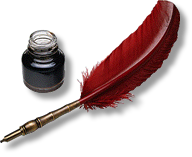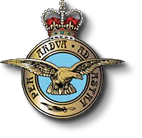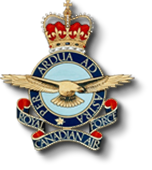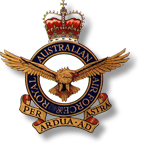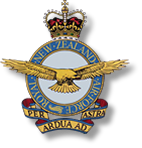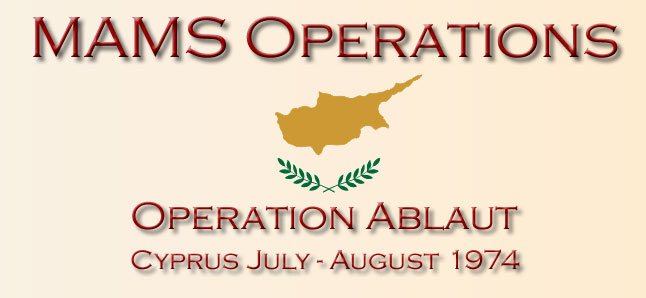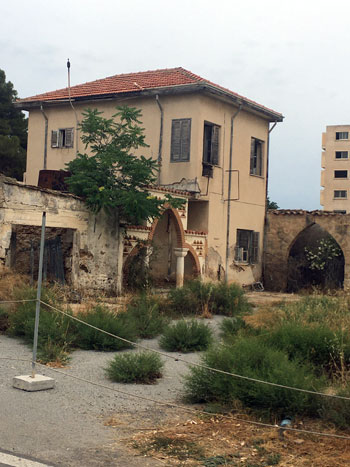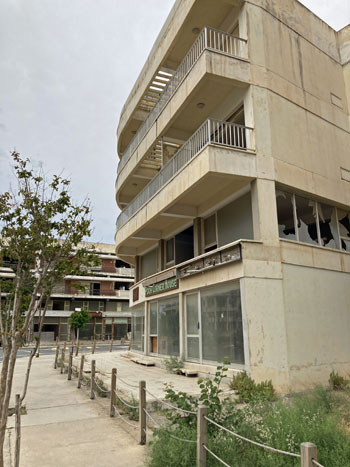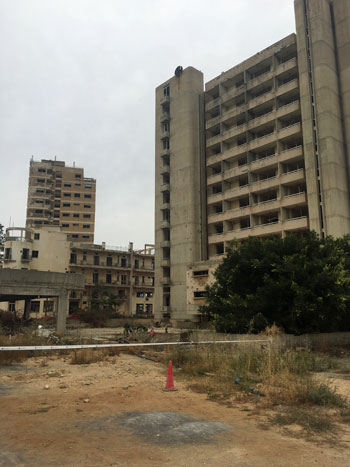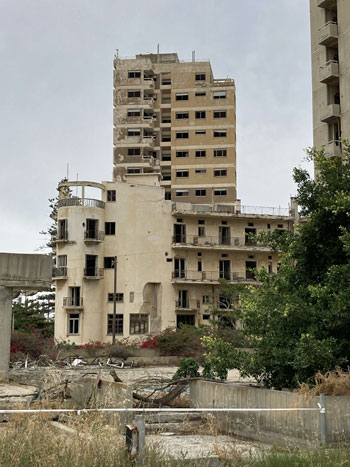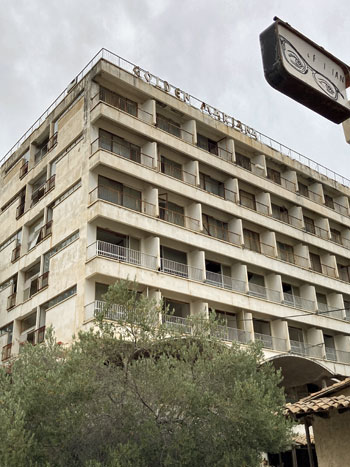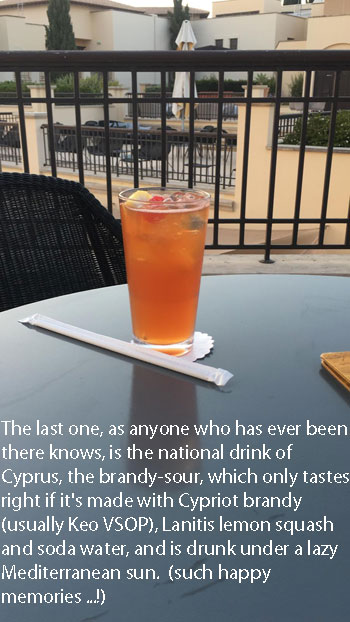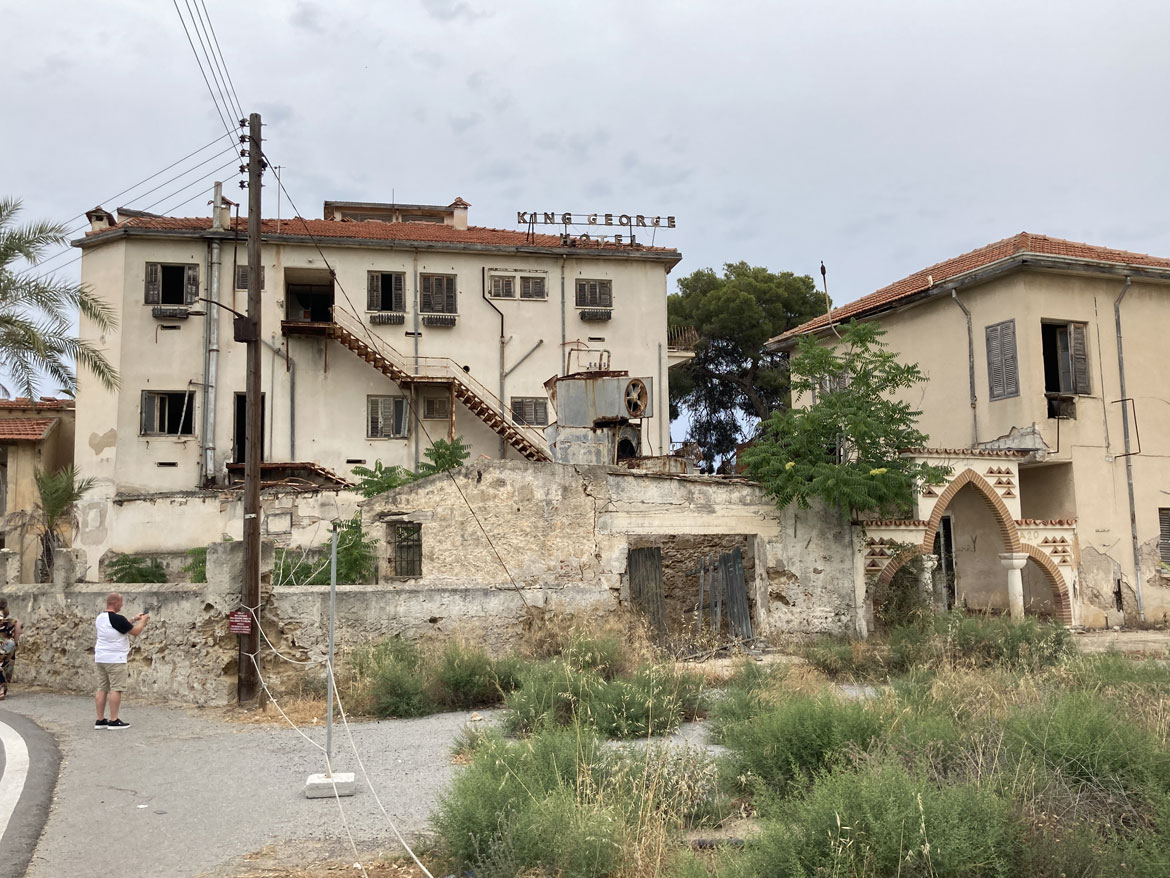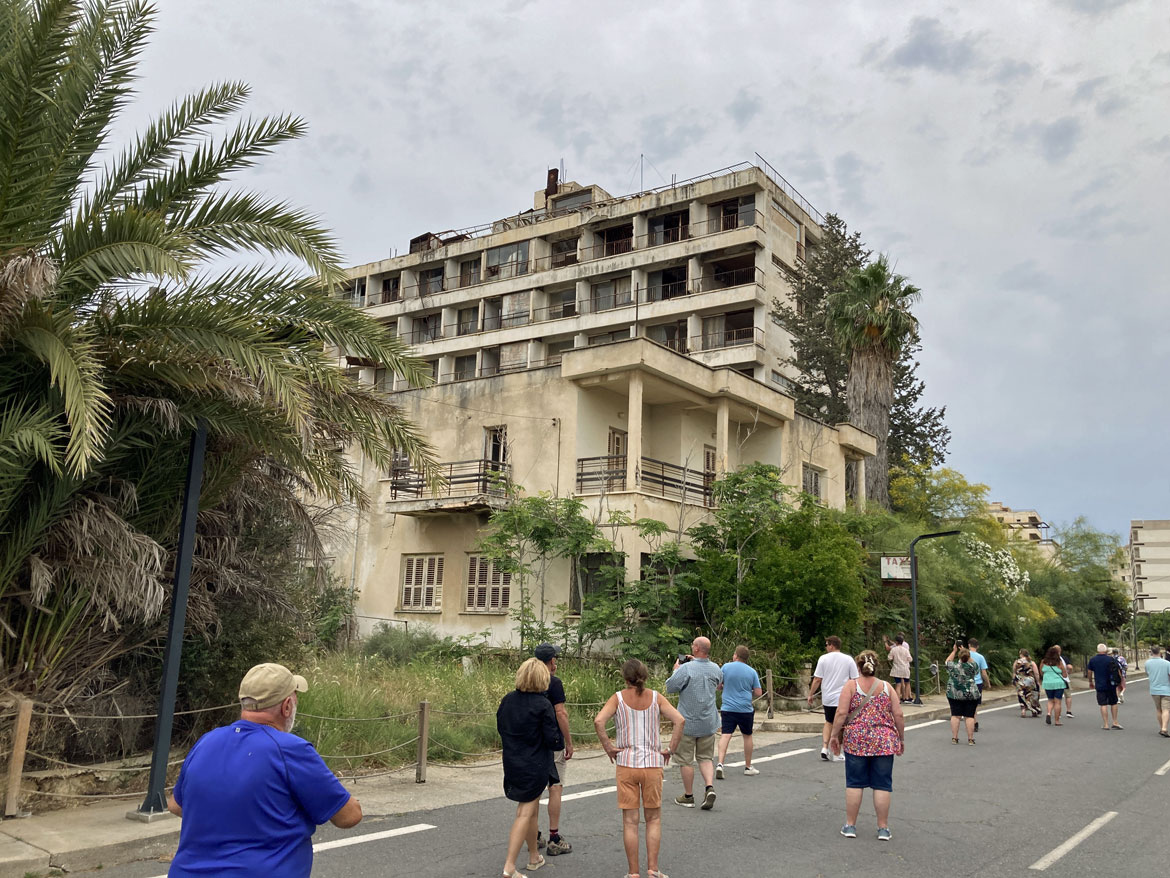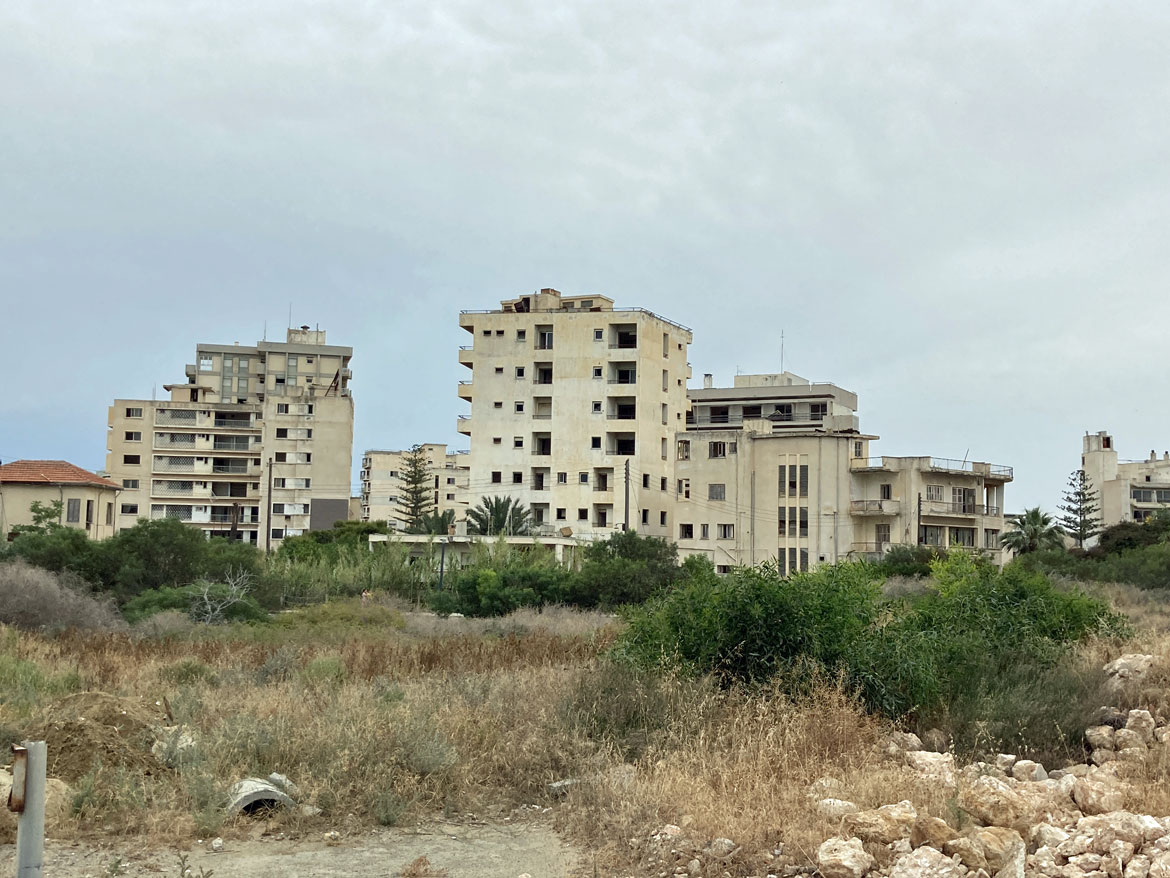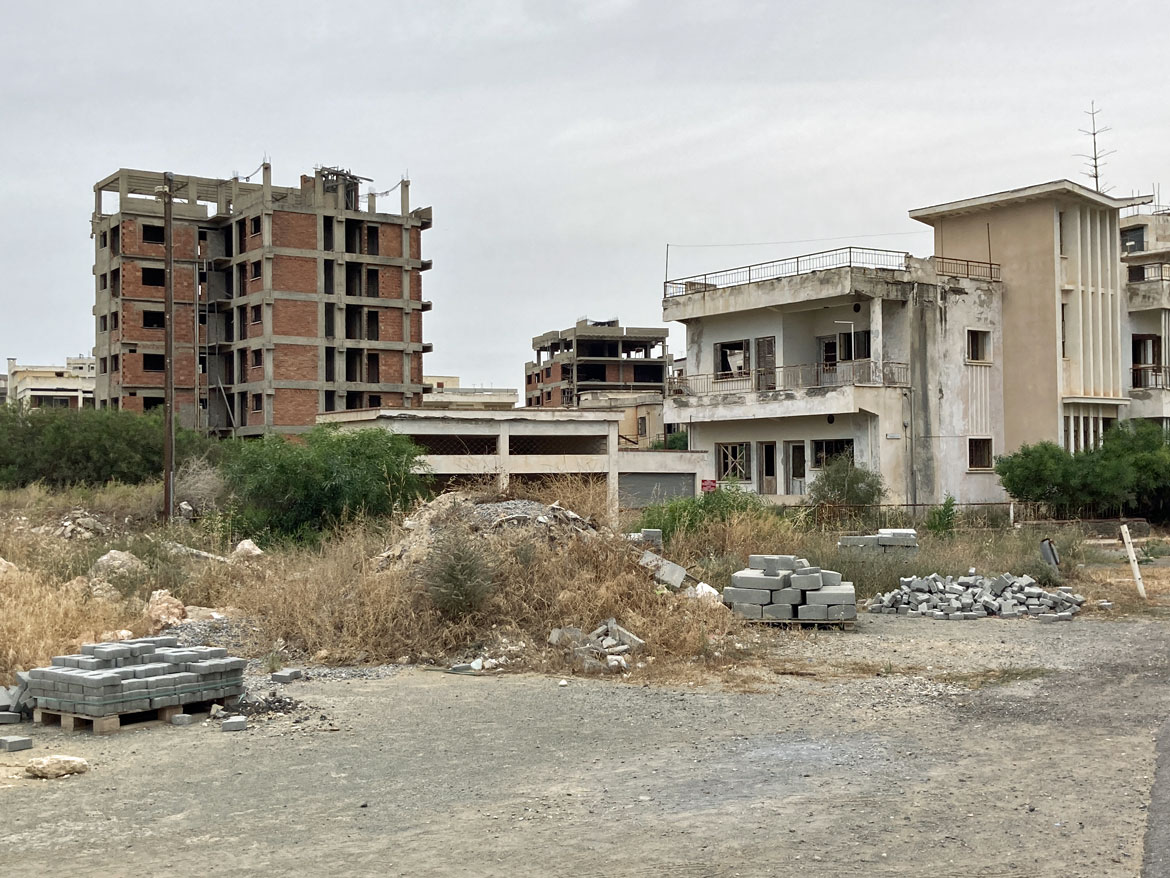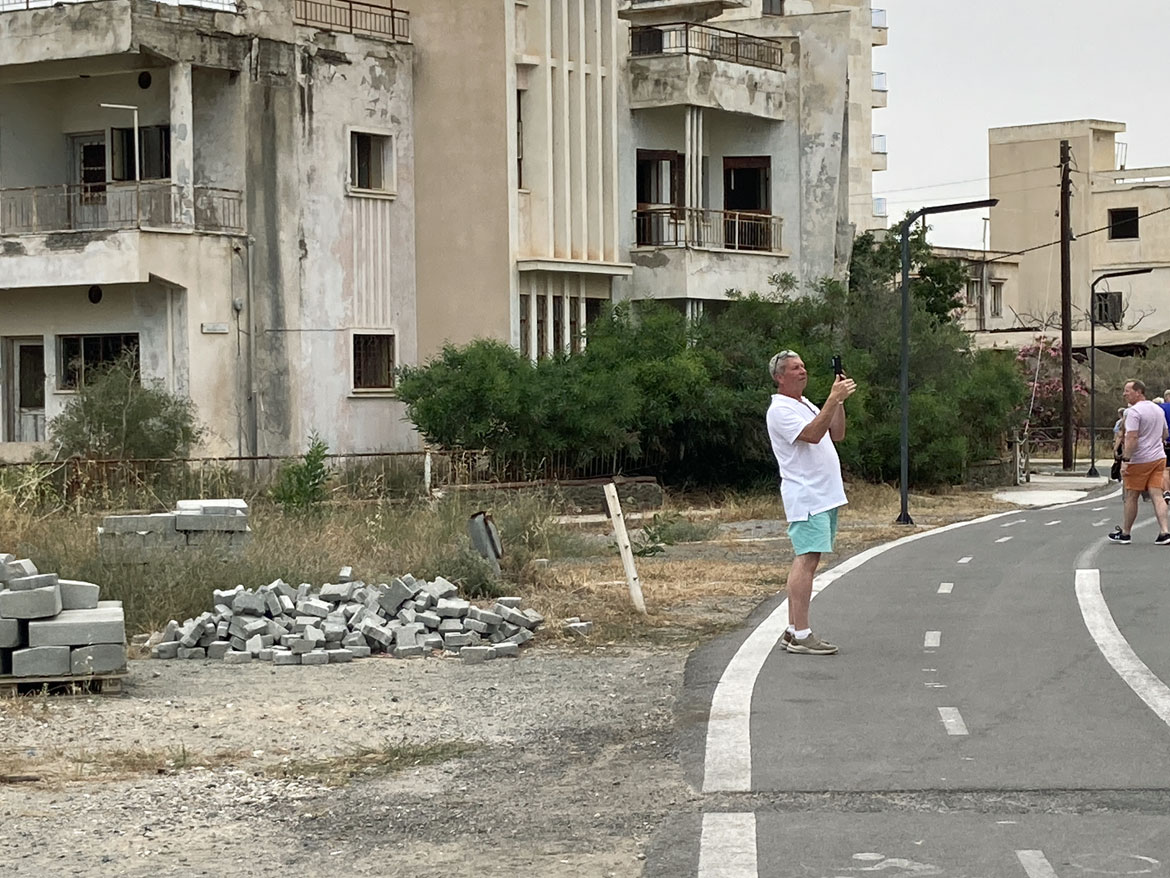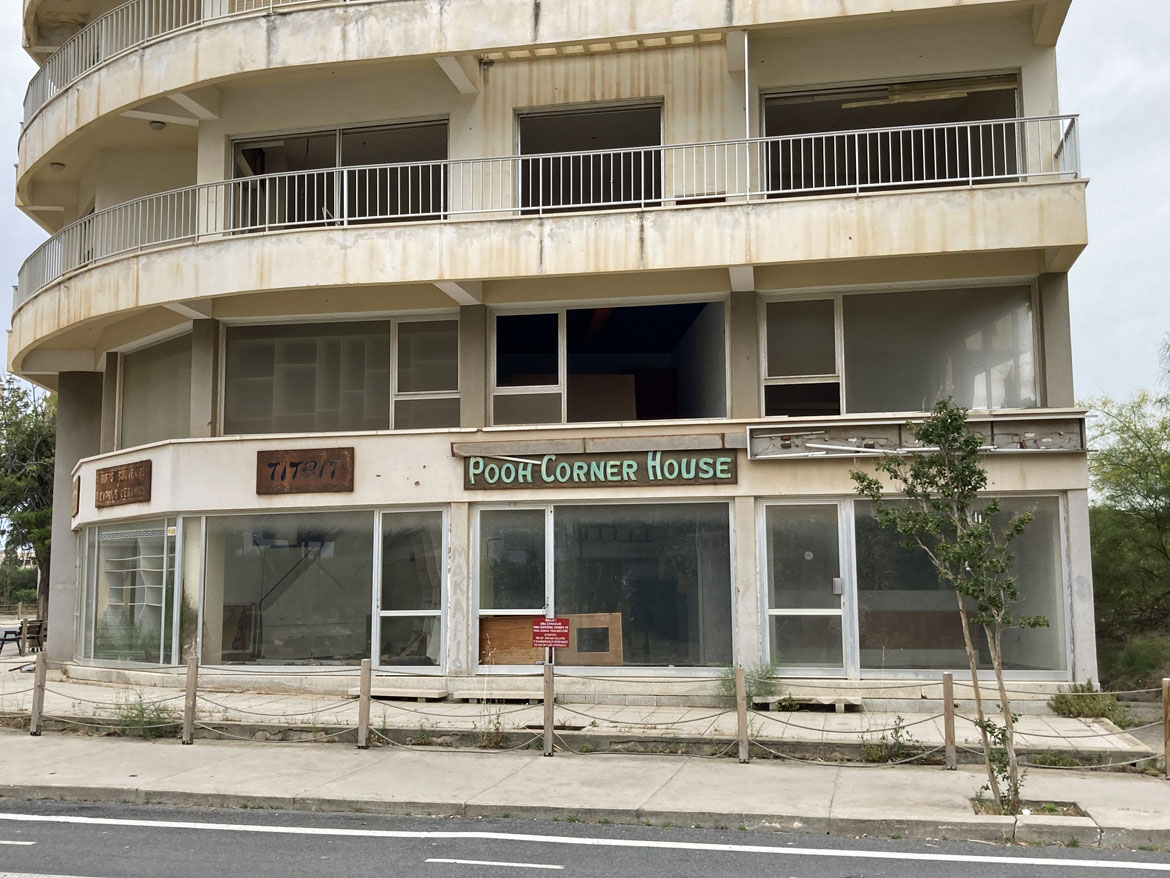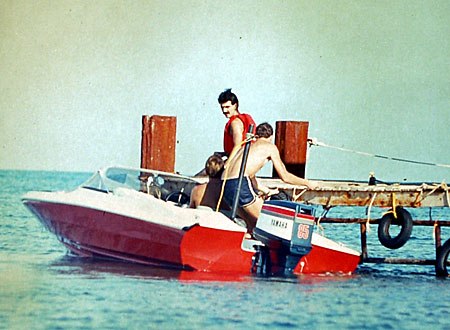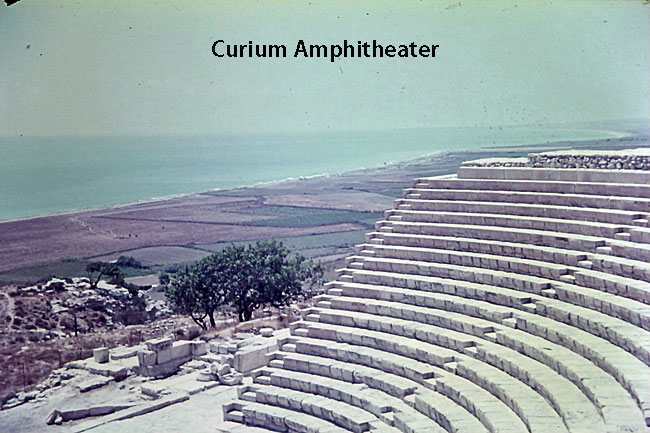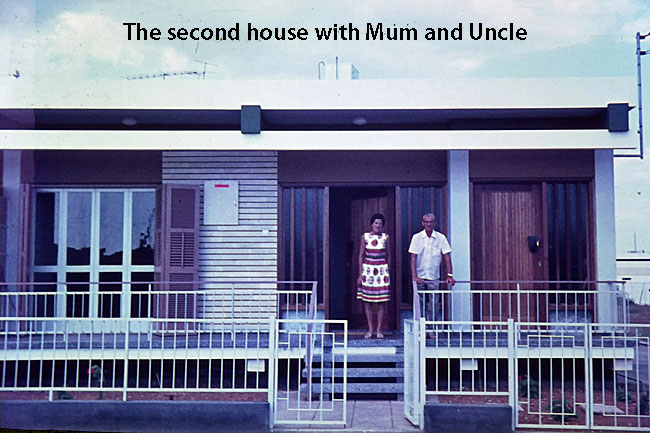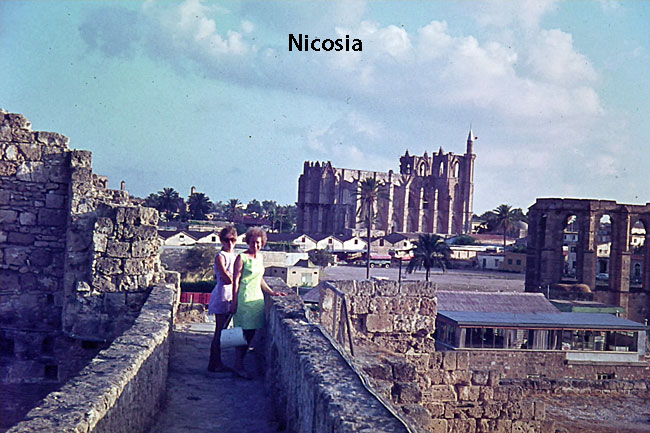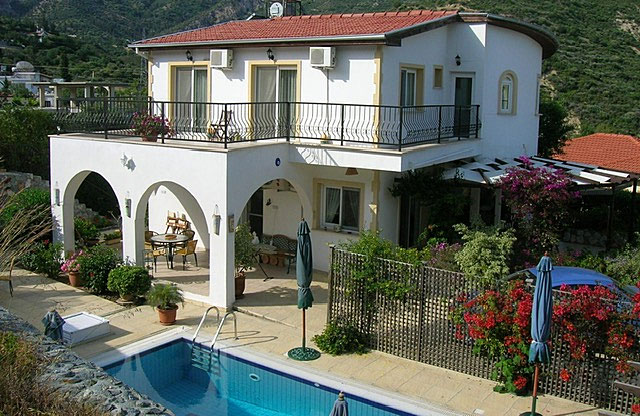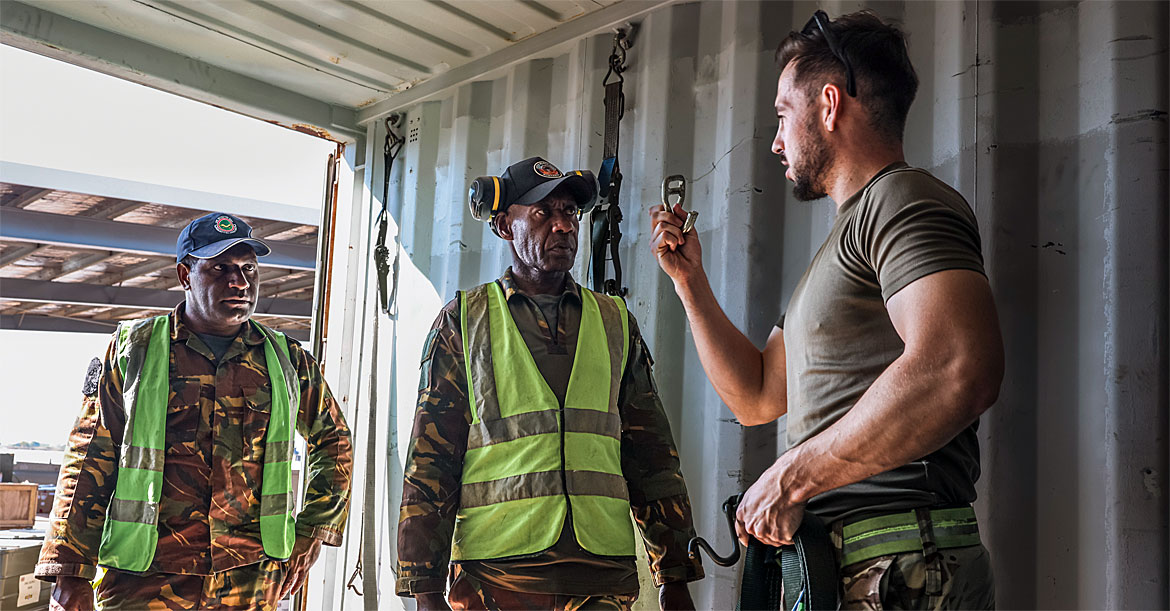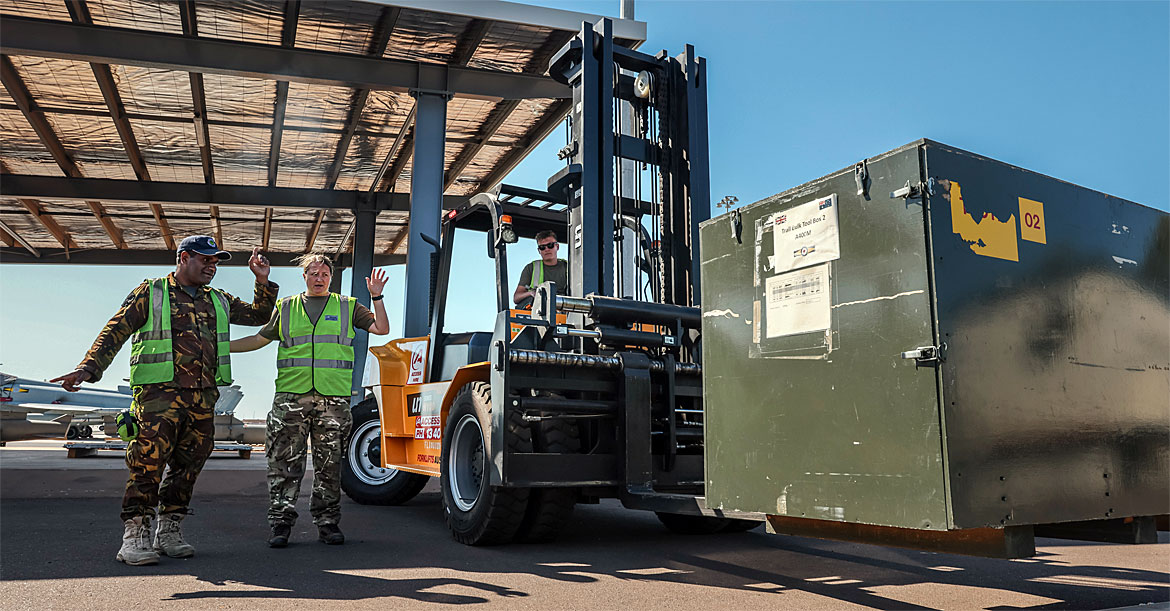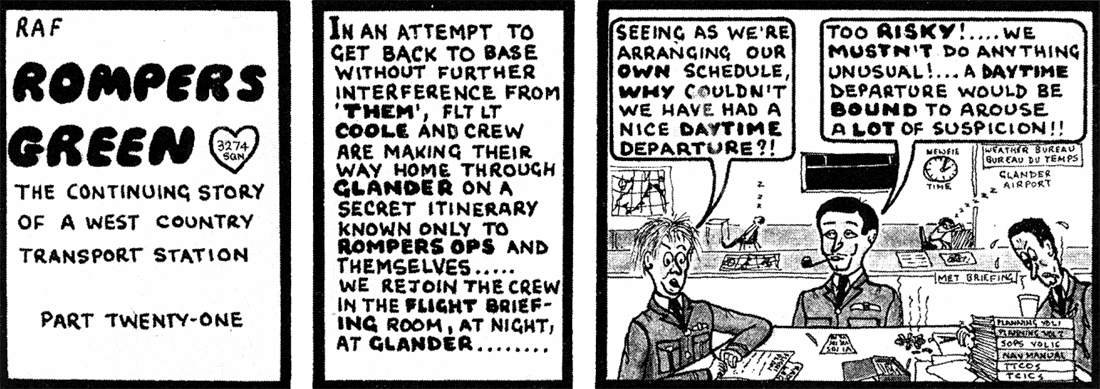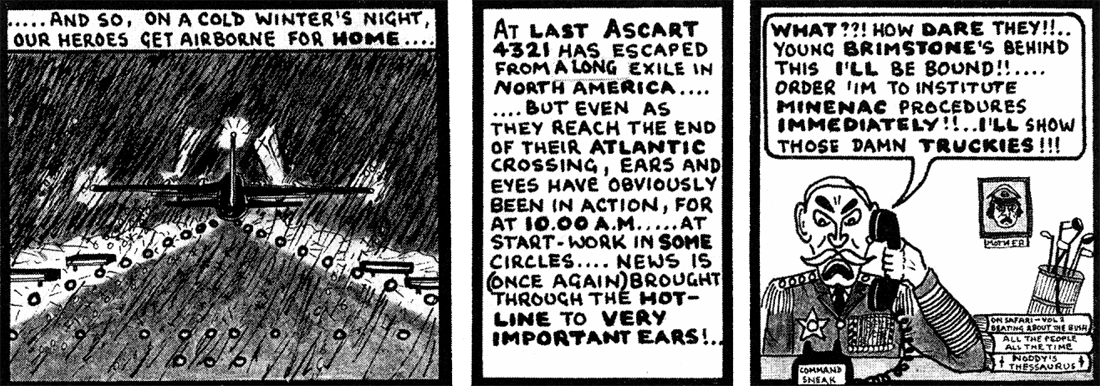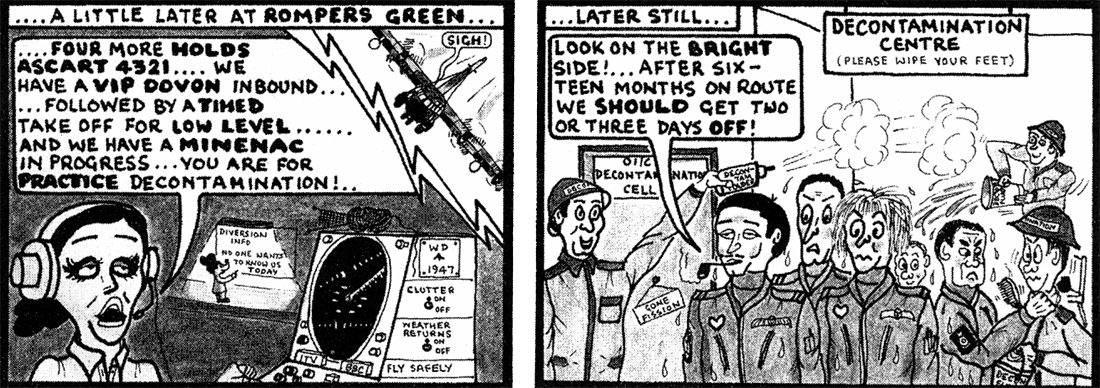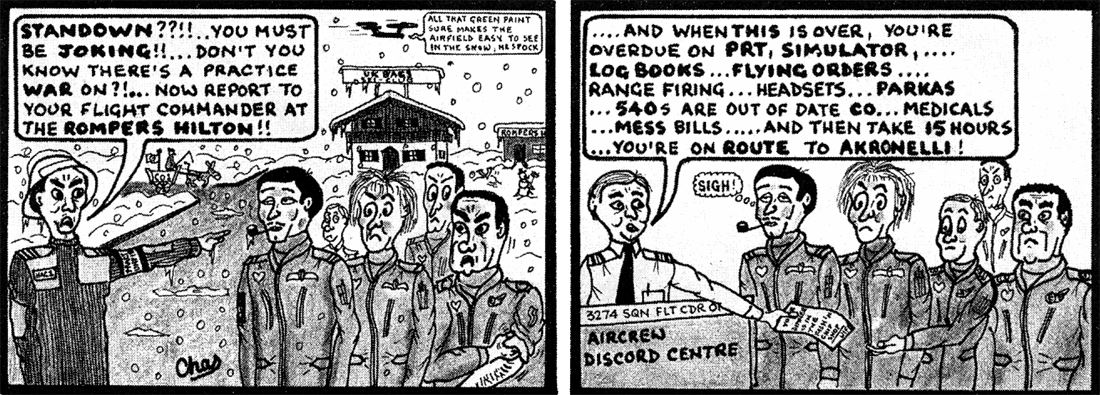
From: Norman Stamper, Torrevieja
Subject: Cyprus
Hi Tony,
Gill and I were in Cyprus from 1972 to 1975. I've attached some information the membership might be interested in about what happened on the island 50 years ago in 1974.
Cheers! Norm
Subject: Cyprus
Hi Tony,
Gill and I were in Cyprus from 1972 to 1975. I've attached some information the membership might be interested in about what happened on the island 50 years ago in 1974.
Cheers! Norm

The Coup D'état. On the morning of 15th July, it was announced that members of the Greek Cypriot National Guard had overthrown the Government of President Makarios and that the president had been killed during the initial attack on the presidential palace. In fact Makarios had fled to the safety of Paphos where he took refuge with loyal elements of the GNG.
Inter-communal fighting broke out across the island and there was an immediate flow of refugees into the safety of the Sovereign Base Areas at Dhekelia, Akrotiri and Episkopi. Events moved at a rapid pace - all dependants of UK Servicemen and British Nationals living in Limassol, Larnaca and Famagusta were evacuated to the safety of the SBA's - President Makarios was rescued by a helicopter of No. 70 Squadron to be flown to safety in the United Kingdom - relations between Greece, Cyprus and Turkey rapidly deteriorated and the Turkish Government announced it's intention to invade the island to protect the Turkish community.
Inter-communal fighting broke out across the island and there was an immediate flow of refugees into the safety of the Sovereign Base Areas at Dhekelia, Akrotiri and Episkopi. Events moved at a rapid pace - all dependants of UK Servicemen and British Nationals living in Limassol, Larnaca and Famagusta were evacuated to the safety of the SBA's - President Makarios was rescued by a helicopter of No. 70 Squadron to be flown to safety in the United Kingdom - relations between Greece, Cyprus and Turkey rapidly deteriorated and the Turkish Government announced it's intention to invade the island to protect the Turkish community.
The Invasion. Turkish forces invaded the island of Cyprus on the morning of 20th July. Air attacks were made on the towns of Nicosia, Paphos, Larnaca and Famagusta. Nicosia International Airport was a prime target of the invading forces and heavy fighting took place which resulted in severe damage to the runways and installations. Thus the airfield at RAF Akrotiri and the emergency airstrip at Kingsfield in the Dhekelia SBA became the only airfields available on the island. Tourists of many nations joined with Greek and Turkish refugees in seeking sanctuary in the SBAs; already overcrowded with servicemen and dependants evacuated from the dormitory towns.
The First Evacuation of Tourists, Refugees and Dependants. Military reinforcement of the Sovereign Base Areas commenced on 21st July when men and equipment of the Strategic Reserve began arriving at Akrotiri by air from the United Kingdom in transport aircraft of No. 46 Group. Because of the acute shortage of accommodation within the SBAs it was decided that the transport aircraft, instead of returning to the UK empty, should be used to fly out the tourists and refugees who were sheltering in the SBAs. Thus began a rescue airlift which was described in the World Press as second only to the Berlin Airlift of 1949.
The emergency airstrip at Kingsfield, activated to receive military reinforcements for the Eastern SBA, was used to ferry tourists and refugees to Akrotiri. At the start of the operation, facilities at the airstrip were rather primitive, but within 48 hours RAF personnel from Akrotiri had established a passenger terminal area capable of dealing with 480 passengers and their baggage at any one time.
The emergency airstrip at Kingsfield, activated to receive military reinforcements for the Eastern SBA, was used to ferry tourists and refugees to Akrotiri. At the start of the operation, facilities at the airstrip were rather primitive, but within 48 hours RAF personnel from Akrotiri had established a passenger terminal area capable of dealing with 480 passengers and their baggage at any one time.
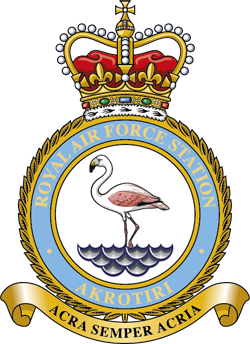
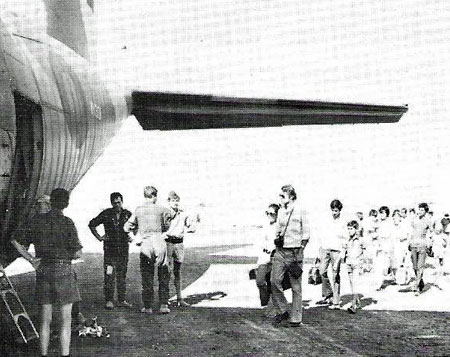
Kingsfield tourists about to board the Hercules
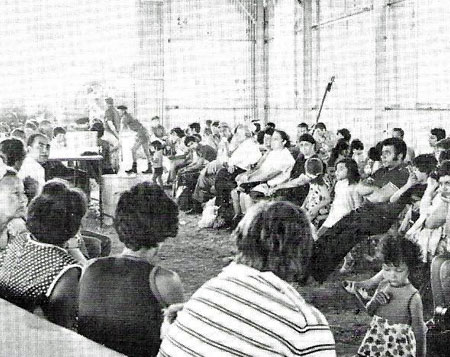
Passenger Terminal at Kingsfield International
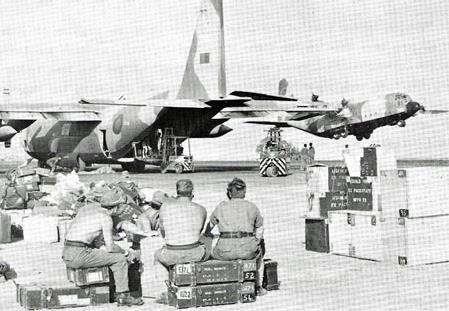
Another load bound for Akrotiri
Flights from Kingsfield were carried out by Hercules and Argosy transport aircraft and the number of flights built up until they peaked at 24 sorties per day on 23rd and 24th July.
Each flight carried 120 passengers, all tourists of many nationalities, who, at every opportunity, praised the efforts of the Royal Air Force in getting them away to safety.
A typical statement made by a tourist was, "The United States, France and Sweden have looked after their own but Britain is looking after the rest of us. We can never again look coldly at the Union Jack."
Each flight carried 120 passengers, all tourists of many nationalities, who, at every opportunity, praised the efforts of the Royal Air Force in getting them away to safety.
A typical statement made by a tourist was, "The United States, France and Sweden have looked after their own but Britain is looking after the rest of us. We can never again look coldly at the Union Jack."
The Kingsfield shuttle, however, was only a small part of the role played by personnel of RAF Akrotiri, from where tourists, refugees and service dependants were being airlifted to the United Kingdom and safety. It must be borne in mind that the operational posture of the station was kept at the highest state of readiness throughout the emergency and service personnel were required to carry out their normal duties as well as coping with the variety of additional tasks which were continually arising.
The immediate effect of the Coup D'état and Turkish invasion was a dramatic drop in the size of the locally employed civilian labour force. To the credit of all, volunteer labour from the wives and children living on the station was immediately forthcoming and without their assistance there is no doubt that the Unit could not have completed all the tasks placed upon it.
The 20th July marked the start of a very intense period of activity for RAF Akrotiri. Throughout that day, service dependants and British Civilians employed by MOD were evacuated from their Limassol homes to the safety of the Base. They were later joined by Service dependants from Troodos, tourists from the southern holiday resorts, Cypriot refugees, the tourists rescued by the Royal Navy and the Kingsfield tourists. They were accommodated wherever space could be found until time as airlift to the United Kingdom became available. Churches, schools and social clubs were all converted into large dormitories by the ever-willing host of helpers from the station. Food, drink and other comforts were provided for every person sheltering on the station. A popular rumour at the time was that if any more people arrived at Akrotiri then the peninsula would slowly sink below the blue waters of the Mediterranean Sea.
The rescue airlift to the United Kingdom started slowly on 21st July but quickly built up to a flow of one aircraft every hour and by 10th August, when the airlift was completed, 1,841 Service dependants and 11,702 tourists and refugees had been emplaned.
The immediate effect of the Coup D'état and Turkish invasion was a dramatic drop in the size of the locally employed civilian labour force. To the credit of all, volunteer labour from the wives and children living on the station was immediately forthcoming and without their assistance there is no doubt that the Unit could not have completed all the tasks placed upon it.
The 20th July marked the start of a very intense period of activity for RAF Akrotiri. Throughout that day, service dependants and British Civilians employed by MOD were evacuated from their Limassol homes to the safety of the Base. They were later joined by Service dependants from Troodos, tourists from the southern holiday resorts, Cypriot refugees, the tourists rescued by the Royal Navy and the Kingsfield tourists. They were accommodated wherever space could be found until time as airlift to the United Kingdom became available. Churches, schools and social clubs were all converted into large dormitories by the ever-willing host of helpers from the station. Food, drink and other comforts were provided for every person sheltering on the station. A popular rumour at the time was that if any more people arrived at Akrotiri then the peninsula would slowly sink below the blue waters of the Mediterranean Sea.
The rescue airlift to the United Kingdom started slowly on 21st July but quickly built up to a flow of one aircraft every hour and by 10th August, when the airlift was completed, 1,841 Service dependants and 11,702 tourists and refugees had been emplaned.
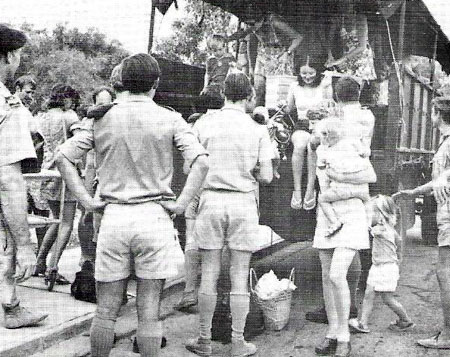
Families arrive from Limassol
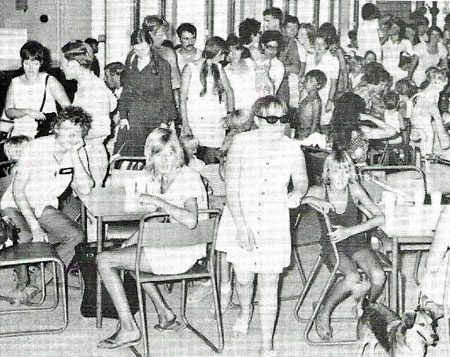
"Flight 2417 is delayed for one hour..."
The Second Evacuation of Dependants and Refugees. Following a short-lived lull in activity subsequent to the cease fire agreement reached in Geneva, Turkish Forces moved out from the cease fire lines on 14th August, eventually to occupy the northern portion of the island. Service dependants, who during the lull had been allowed to return to their homes in the dormitory towns, were once again pulled back to the safety of the SBAs, this time to be evacuated to the UK in a second airlift from RAF Akrotiri. They were joined for the airlift by further refugees and British and Foreign Nationals who sought sanctuary in the SBAs as the Turkish advance continued. Amongst the RAF dependants evacuated on the second airlift were the many, many volunteers who had helped during the first evacuation of the tourists from Akrotiri and in consequence the smaller numbers of people remaining at Akrotiri were required to work even harder than before. Once again the dependants answered the call for help with great enthusiasm. Children and wives were working in mess kitchens, cleaning barrack blocks, assisting with the processing of passengers, moving and loading the vast quantities of baggage while their fathers and husbands, after completing their normal duties, were also volunteering their help.
The 16-hour working day was the Akrotiri standard. Everyone with spare time set about the task of achieving the smooth flow of passengers. That 3,076 refugees and 8,182 dependants were flown out on 124 aircraft in a period of 2½ days is a measure of the degree of efficiency which was achieved. This second airlift was to prove more intensive than the first . At any one time there were 33 RAF transport aircraft, carrying 1,000 passengers, airborne en route between Cyprus and England. Aircraft were landing at and taking off from Akrotiri every half hour for the 2½ days.
The rescue airlifts came to an end on 17th August. Since 20th July a total of 24,801 tourists, refugees and dependants had been processed, fed and accommodated at Akrotiri before flying to the safety of the United Kingdom. The good will of these people is best summed up by the following article which appeared in the Daily Mirror on 2nd August:
I'm RAF - Fly Me. Holiday makers evacuated from Cyprus have been telling the story of their dramatic escape from the island. One family's tale of woe sounded more than vaguely familiar. Mr Dudley Curtis said they arrived back in England after a 38 hour journey, "Blind with fatigue, shattered and with no money". Where could I have heard it before? Well, at Luton airport any weekend for a start. It is, after all, a fairly accurate description of a state in which many package tourists arrive home, even when they HAVEN'T been caught up in a war.
One point everyone evacuated from Cyprus seems to agree on was how marvellously the RAF and Navy handled the return home operation. Mr Curtis spoke of "unbelievable hospitality and generosity" of the men, who anticipated their every need with "smiles that were never false".
This is the kind of treatment that every holidaymaker expects and rarely gets. When the Cyprus business is sorted out, Defence Ministry's Chiefs should grab a slice of the tour operator's cake. I'll book an RAF holiday any day.
The rescue airlifts came to an end on 17th August. Since 20th July a total of 24,801 tourists, refugees and dependants had been processed, fed and accommodated at Akrotiri before flying to the safety of the United Kingdom. The good will of these people is best summed up by the following article which appeared in the Daily Mirror on 2nd August:
I'm RAF - Fly Me. Holiday makers evacuated from Cyprus have been telling the story of their dramatic escape from the island. One family's tale of woe sounded more than vaguely familiar. Mr Dudley Curtis said they arrived back in England after a 38 hour journey, "Blind with fatigue, shattered and with no money". Where could I have heard it before? Well, at Luton airport any weekend for a start. It is, after all, a fairly accurate description of a state in which many package tourists arrive home, even when they HAVEN'T been caught up in a war.
One point everyone evacuated from Cyprus seems to agree on was how marvellously the RAF and Navy handled the return home operation. Mr Curtis spoke of "unbelievable hospitality and generosity" of the men, who anticipated their every need with "smiles that were never false".
This is the kind of treatment that every holidaymaker expects and rarely gets. When the Cyprus business is sorted out, Defence Ministry's Chiefs should grab a slice of the tour operator's cake. I'll book an RAF holiday any day.
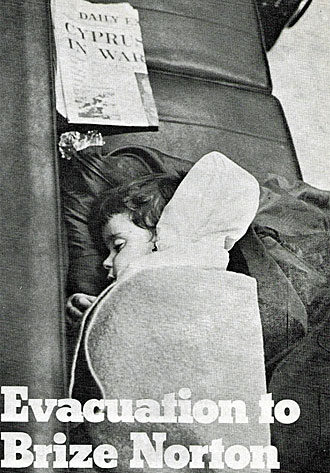
Refugee Supplies. Much publicity has been given in the World Press to the plight of the 200,000 Cypriot refugees made homeless by the Turkish invasion of the island. Quantities of food, clothing and medical supplies were soon being offered from all over the world and air transport by way of Akrotiri was initially the only manner in which these urgently needed supplies could be got into Cyprus. Military and civil aircraft from eight different air forces and 22 airlines have so far taken part in the operation. The station Movements and Servicing staffs have had to deal with 39 different types of aircraft , ranging in size from an Antonov 24 to a C5A-Galaxy, and there has been a continual flow of refugee supply aircraft to the station since the Emergency began. RAF Akrotiri has handled refugee aid from two sources; the United Nations High Commission for Refugees and the International Red Cross.
In all a total of 5,446,000 lbs of supplies have been received at the Unit comprising:
In all a total of 5,446,000 lbs of supplies have been received at the Unit comprising:
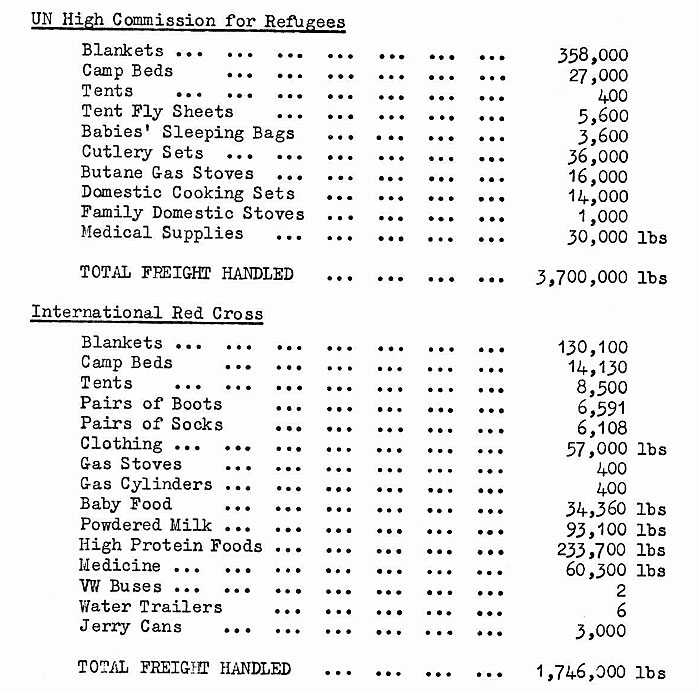
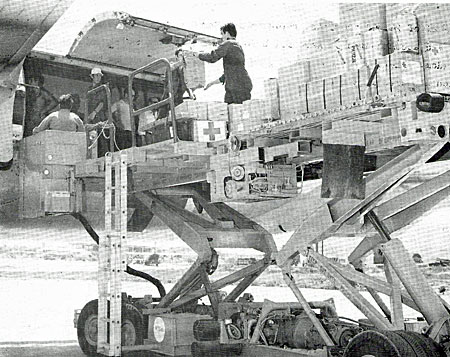
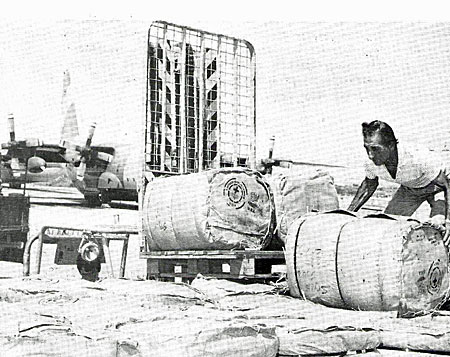
United Nations Force in Cyprus. As a result of the Geneva peace talks and the cease fire agreement the strength of the United Nations Force in Cyprus was increased. As the only airhead available in Cyprus, RAF Akrotiri was called upon to receive the reinforcements and was subsequently used by the Air Forces of the participating countries for their task of re-supply and rotation of forces. Initially the task, superimposed on the rescue airlifts and the refugee supplies, presented formidable problems for the Unit. But once again sections of the Station volunteered their help to complete the job. As time went by this operation settled down to a steady flow of two or three aircraft per day and by the end of the year no fewer than 218 aircraft movements had been handled bringing in 3,300 troops and 7,000,000 pounds of freight, taking out 3,050 troops and 2,400,000 pounds of freight.
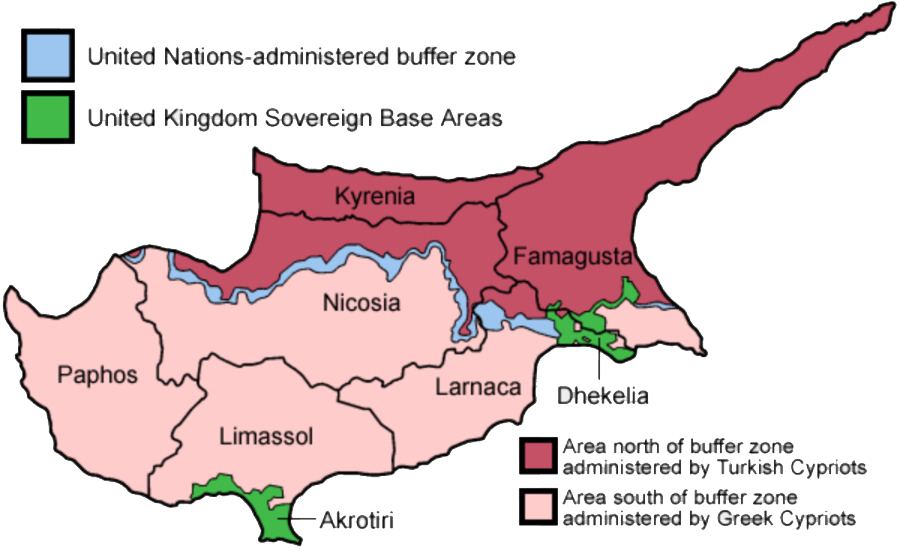

Global Super Hercules Fleet Grows with Delivery of First C-130J to New Zealand
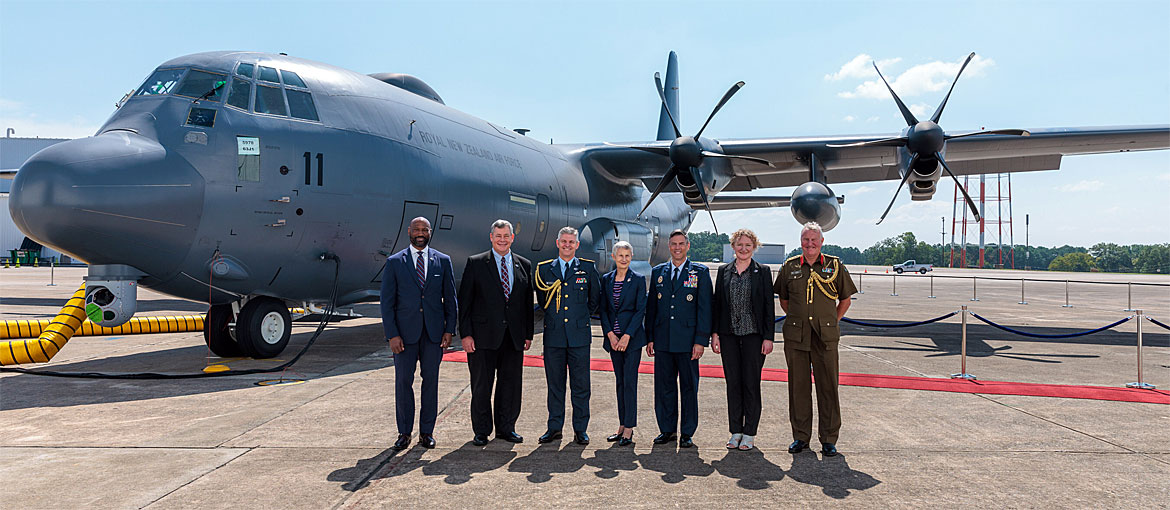
Representatives from Lockheed Martin, the New Zealand Embassy to the United States, the New Zealand Ministry of Defence, the New Zealand Defence Force and the Royal New Zealand Air Force gathered at the Lockheed Martin Aeronautics site Marietta, Georgia, on Aug. 8, 2024, to celebrate the delivery of the RNZAF's first of five C-130J Super Hercules airlifters.
A new era of tactical airlift capability for New Zealand has officially begun with Lockheed Martin delivering the first of five C-130J Super Hercules tactical airlifters to the New Zealand Ministry of Defence and New Zealand Defence Force during a ceremony at the Lockheed Martin's facility in Marietta, Georgia, on Aug. 8.
For almost six decades, the Royal New Zealand Air Force's (RNZAF) C-130Hs have served as essential first-response resources for New Zealand and the entire Indo-Pacific region. Crews from 40 Squadron located at RNZAF Base Auckland, Whenuapai, will operate the new C-130Js, representing one of the most advanced configurations of the Super Hercules ever produced.
Rod McLean, vice president and general manager of Lockheed Martin's Air Mobility and Maritime Missions line of business said, "From supporting humanitarian and disaster relief operations to partnering with allies in military operations, New Zealand's C-130s are truly a global force for good. The RNZAF's new C-130J fleet will continue to support these critical missions while offering New Zealand increased allied alignment, greater reach, enhanced capabilities and proven performance for some of the most demanding tactical airlift operational requirements."
New Zealand officials announced the intent to modernize its existing fleet of five C-130Hs with five C-130J-30 variants in 2020 via a Foreign Military Sale with the U.S. Air Force. A joint project team with personnel from New Zealand's Ministry of Defence and the New Zealand Defence Force have worked alongside the U.S. Air Force and Lockheed Martin to manage the aircraft delivery and training programs.
news.lockheedmartin.com
For almost six decades, the Royal New Zealand Air Force's (RNZAF) C-130Hs have served as essential first-response resources for New Zealand and the entire Indo-Pacific region. Crews from 40 Squadron located at RNZAF Base Auckland, Whenuapai, will operate the new C-130Js, representing one of the most advanced configurations of the Super Hercules ever produced.
Rod McLean, vice president and general manager of Lockheed Martin's Air Mobility and Maritime Missions line of business said, "From supporting humanitarian and disaster relief operations to partnering with allies in military operations, New Zealand's C-130s are truly a global force for good. The RNZAF's new C-130J fleet will continue to support these critical missions while offering New Zealand increased allied alignment, greater reach, enhanced capabilities and proven performance for some of the most demanding tactical airlift operational requirements."
New Zealand officials announced the intent to modernize its existing fleet of five C-130Hs with five C-130J-30 variants in 2020 via a Foreign Military Sale with the U.S. Air Force. A joint project team with personnel from New Zealand's Ministry of Defence and the New Zealand Defence Force have worked alongside the U.S. Air Force and Lockheed Martin to manage the aircraft delivery and training programs.
news.lockheedmartin.com


From: Stephen Davey, Tadcaster, North Yorks
Subject: Halifax Wings
Hi Tony,
I was interested to read the story about the "Halifax " wings as I have been a volunteer guide at the Yorkshire Air Museum for the past 7½ years. The wing sat on a Queen Mary trailer next to the Handley Page Hangar. The wing was from a Hastings serial number TG536 which was sat on the fire dump at RAF Catterick and was due for burning exercises. It was subsequently rescued and the other wing was used to restore the Halifax "Friday the 13th " which currently resides at the Yorkshire Air Museum.
Regards,
Steve
Subject: Halifax Wings
Hi Tony,
I was interested to read the story about the "Halifax " wings as I have been a volunteer guide at the Yorkshire Air Museum for the past 7½ years. The wing sat on a Queen Mary trailer next to the Handley Page Hangar. The wing was from a Hastings serial number TG536 which was sat on the fire dump at RAF Catterick and was due for burning exercises. It was subsequently rescued and the other wing was used to restore the Halifax "Friday the 13th " which currently resides at the Yorkshire Air Museum.
Regards,
Steve

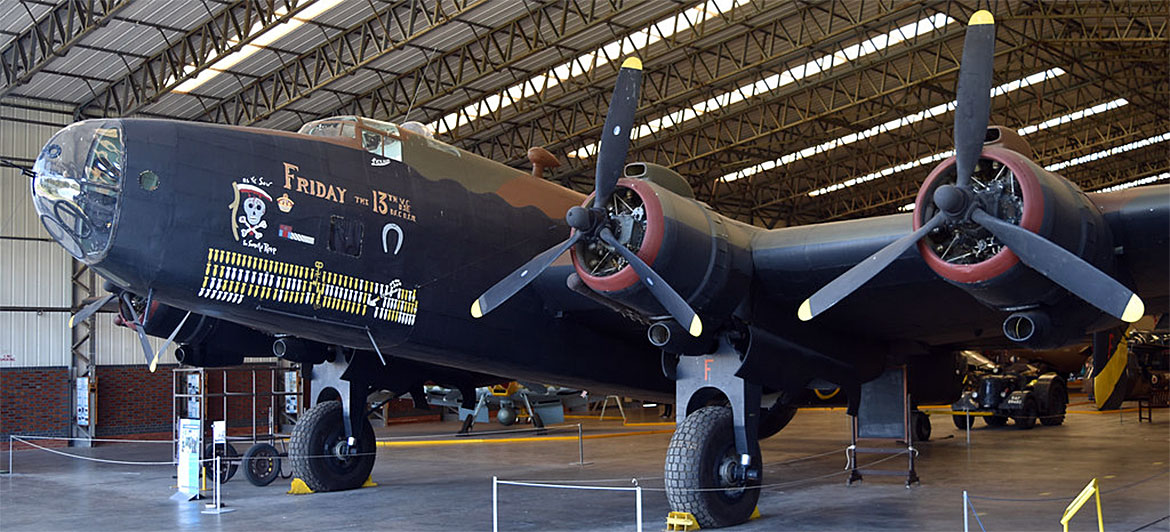
"Friday the 13th" Halifax of 158 Squadron in T2 Hangar, Yorkshire Air Museum, Elvington

From: Colin Savill, Tuxford, Notts
Subject: Cyprus
Tony,
The item in the last OBB about Op Ablaut brought back memories. I was on C shift and we were on 12 hour nights when it all kicked off. The shift pattern back then was a cycle of 28 days starting with 2 x 12 hour days (Saturday, Sunday), 5 evenings 5-11 pm, weekend off, 5 days, weekend off, 7 nights - 5 x 11 pm - 8 am and the last two 12 hours then a five day break before starting again.
I was, as usual, the sole person/trim clerk in Movements Control when it started and it quickly ramped up through the night. We did 14 straight 12 hour night shifts with two shifts on at the same time. Towards the end we were going on shift, when done we would grab some sleep and then go on shift again.
When things calmed down we got 4 days off and the shift pattern was permanently changed to 4 on/4 off. Blessed relief!
Oh happy (!) memories.
Regards,
Colin
Subject: Cyprus
Tony,
The item in the last OBB about Op Ablaut brought back memories. I was on C shift and we were on 12 hour nights when it all kicked off. The shift pattern back then was a cycle of 28 days starting with 2 x 12 hour days (Saturday, Sunday), 5 evenings 5-11 pm, weekend off, 5 days, weekend off, 7 nights - 5 x 11 pm - 8 am and the last two 12 hours then a five day break before starting again.
I was, as usual, the sole person/trim clerk in Movements Control when it started and it quickly ramped up through the night. We did 14 straight 12 hour night shifts with two shifts on at the same time. Towards the end we were going on shift, when done we would grab some sleep and then go on shift again.
When things calmed down we got 4 days off and the shift pattern was permanently changed to 4 on/4 off. Blessed relief!
Oh happy (!) memories.
Regards,
Colin
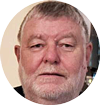

From: Ian Place, Leeds, West Yorks
Subject: Cyprus
Hi Tony,
Operation Ablaut July 1974 - I remember it so well as it was my 25th Birthday on Friday 19th and it was all over the "News at Ten". We had gone out for a steak dinner only to return to a knock on the door telling us to report Saturday am with KD.
We boarded a Bristol Britannia and flew to Akrotiri, Cyprus, to take over the Movements Unit there. The C130's of 70 Squadron were ferrying in tourists from Kingsfield up near Dhekelia on the front line of the advancing Turks. The tourists were mostly dressed in their swimwear, which got the approval of all the movers. They then were transferred to C130's, Britannia's and VC10's which had been all commandeered from flights going East to Bahrain, Gan, Singapore and Hong Kong. One hapless crew decided to load up and taxi out to the runway only to turn back due to lack of fuel.
The only hard work we were involved with was packed civilian aircraft bringing medical supplies for the injured which were transferred to 70 Squadron C130's. We ended up forging all our vehicle documents. On the 31st July we recovered to RAF Fairford as RAF Brize Norton's runway was being re-surfaced.
Ian
Subject: Cyprus
Hi Tony,
Operation Ablaut July 1974 - I remember it so well as it was my 25th Birthday on Friday 19th and it was all over the "News at Ten". We had gone out for a steak dinner only to return to a knock on the door telling us to report Saturday am with KD.
We boarded a Bristol Britannia and flew to Akrotiri, Cyprus, to take over the Movements Unit there. The C130's of 70 Squadron were ferrying in tourists from Kingsfield up near Dhekelia on the front line of the advancing Turks. The tourists were mostly dressed in their swimwear, which got the approval of all the movers. They then were transferred to C130's, Britannia's and VC10's which had been all commandeered from flights going East to Bahrain, Gan, Singapore and Hong Kong. One hapless crew decided to load up and taxi out to the runway only to turn back due to lack of fuel.
The only hard work we were involved with was packed civilian aircraft bringing medical supplies for the injured which were transferred to 70 Squadron C130's. We ended up forging all our vehicle documents. On the 31st July we recovered to RAF Fairford as RAF Brize Norton's runway was being re-surfaced.
Ian
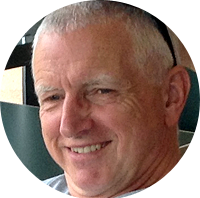

From: Ian Berry, Eastleaze, Swindon, Wilts
Subject: Cyprus
Hi Tony,
Some details of my time on Op Ablaut at Lyneham... In mid-February 1974, UKMAMS had moved it's headquarters from RAF Abingdon to RAF Lyneham to amalgamate with the Air Movements Squadron there. It was in fact a very sad time. To rub salt into the wound, it was decided that a Mobile Team would join a shift for a six-month cycle to help integrate. So, Echo Team took over C Shift. Not a happy marriage as we were all volunteers for Mobile Duties and most of the “Shifties” were the opposite. As one of two sergeants, I looked after the Traffic side of things.
In mid-July, there was a coup staged in Cyprus and President (Archbishop) Makarios had narrowly escaped death and made it to Paphos. From there he was flown to Akrotiri in a Whirlwind Helicopter and from there he was flown in a 70 Sqn Argosy to Malta on the 16th July. He was then flown by a 216 Squadron Comet to Lyneham. I was on shift that day, 17th July, and I remember his arrival. All eyes then turned to the Eastern Mediterranean to see what would happen next.
On the 20th July, the Turks staged an invasion of Northern Cyprus by air and sea. It must be remembered we had two Sovereign Base Areas; Akrotiri and Episkopi in the West (WSBA) and Dhekelia in the East (ESBA). A lot of the families in the WSBA lived in hirings in Limassol. The ESBA was close to the popular tourist resort of Famagusta and also had an Airstrip known as Kingsfield. Famagusta also hosted the Joint Services Port Unit (JSPU) manned by the Army's Royal Corps of Transport (RCT) and RAF Movements Branch. We also had a small Unit of 150 personnel at RAF Nicosia, opposite which was the HQ UN Forces in Cyprus (UNFICYP).
Subject: Cyprus
Hi Tony,
Some details of my time on Op Ablaut at Lyneham... In mid-February 1974, UKMAMS had moved it's headquarters from RAF Abingdon to RAF Lyneham to amalgamate with the Air Movements Squadron there. It was in fact a very sad time. To rub salt into the wound, it was decided that a Mobile Team would join a shift for a six-month cycle to help integrate. So, Echo Team took over C Shift. Not a happy marriage as we were all volunteers for Mobile Duties and most of the “Shifties” were the opposite. As one of two sergeants, I looked after the Traffic side of things.
In mid-July, there was a coup staged in Cyprus and President (Archbishop) Makarios had narrowly escaped death and made it to Paphos. From there he was flown to Akrotiri in a Whirlwind Helicopter and from there he was flown in a 70 Sqn Argosy to Malta on the 16th July. He was then flown by a 216 Squadron Comet to Lyneham. I was on shift that day, 17th July, and I remember his arrival. All eyes then turned to the Eastern Mediterranean to see what would happen next.
On the 20th July, the Turks staged an invasion of Northern Cyprus by air and sea. It must be remembered we had two Sovereign Base Areas; Akrotiri and Episkopi in the West (WSBA) and Dhekelia in the East (ESBA). A lot of the families in the WSBA lived in hirings in Limassol. The ESBA was close to the popular tourist resort of Famagusta and also had an Airstrip known as Kingsfield. Famagusta also hosted the Joint Services Port Unit (JSPU) manned by the Army's Royal Corps of Transport (RCT) and RAF Movements Branch. We also had a small Unit of 150 personnel at RAF Nicosia, opposite which was the HQ UN Forces in Cyprus (UNFICYP).
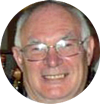
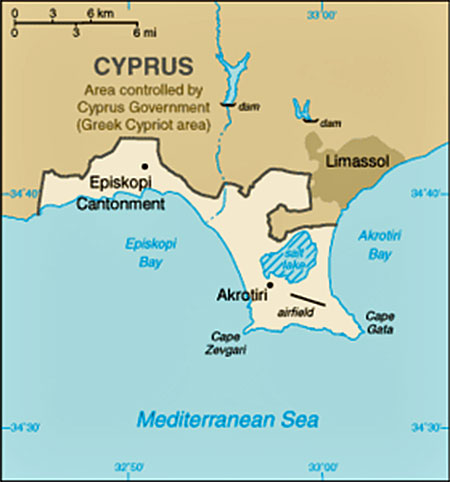
The Western Sovereign Base Area (WSBA)
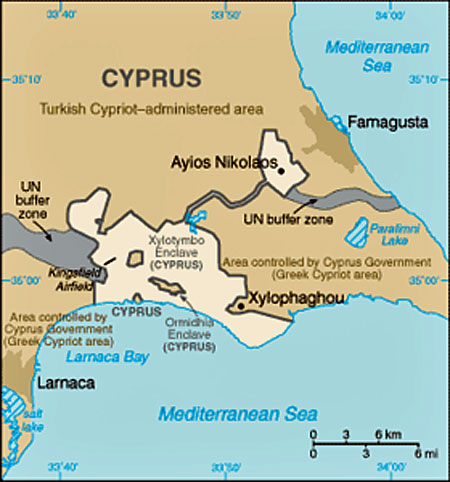
The Eastern Sovereign Base Area (ESBA)
In Cyprus things started happening fast and the main concern was the safety of our dependents and securing our own assets. Convoys of buses and trucks began to evacuate the families from Limassol into Akrotiri. Similar scenes were occurring in Dhekelia as well as the families from Nicosia being moved onto the ESBA.
I’m not sure of the exact dates, but around the 20th things started to get busy... everywhere! At Lyneham the shifts doubled up and we started 12 hour days and nights. A 216 Squadron Comet flight was generated and 4-6 Mobile Teams were deployed along with other support personnel and Slip Crews to Akrotiri. In short order we were inundated with primarily Army loads, starting with the Spearhead Battalion and all their equipment. Armoured car Units followed as well as Royal Marine Commandos. Off base Mobile tasks included the deployment of Phantoms from RAF Coningsby.
Shortly after the activation of what was called Operation Ablaut, we started to receive the first RAF families being evacuated back to the UK. A Reception Area and facilities were set up in J5 Hangar and the man in charge was the then OC Supply Wing, Wg Cdr Bill Girdwood, who had been a Team Leader on FEAF MAMS in a previous life. The Reception Team were very efficient and the processing of evacuees impressive. On arrival they were given an advance of allowances, allocated Married Quarters Accommodation somewhere in the UK, issued rail warrants and more.
One day I received a call from my old pal, Gordon Black in Cyprus, who was then on NEAF MAMS. We had met the previous year when he came to Abingdon with his team for refresher training and then we did a handover in Sharjah. Gordon was operating out of Kingsfield Airstrip along with the rest of the two NEAF MAMS Teams. He knew his family had been evacuated from Limassol and then back to the UK but wanted to know where had they gone from there? I started to make enquiries on his behalf until I was publicly harangued by the Wing Commander and told there was to be no abuse of the system and “Mr Black” would find out where his family went at the same time as everybody else!
I’m not sure of the exact dates, but around the 20th things started to get busy... everywhere! At Lyneham the shifts doubled up and we started 12 hour days and nights. A 216 Squadron Comet flight was generated and 4-6 Mobile Teams were deployed along with other support personnel and Slip Crews to Akrotiri. In short order we were inundated with primarily Army loads, starting with the Spearhead Battalion and all their equipment. Armoured car Units followed as well as Royal Marine Commandos. Off base Mobile tasks included the deployment of Phantoms from RAF Coningsby.
Shortly after the activation of what was called Operation Ablaut, we started to receive the first RAF families being evacuated back to the UK. A Reception Area and facilities were set up in J5 Hangar and the man in charge was the then OC Supply Wing, Wg Cdr Bill Girdwood, who had been a Team Leader on FEAF MAMS in a previous life. The Reception Team were very efficient and the processing of evacuees impressive. On arrival they were given an advance of allowances, allocated Married Quarters Accommodation somewhere in the UK, issued rail warrants and more.
One day I received a call from my old pal, Gordon Black in Cyprus, who was then on NEAF MAMS. We had met the previous year when he came to Abingdon with his team for refresher training and then we did a handover in Sharjah. Gordon was operating out of Kingsfield Airstrip along with the rest of the two NEAF MAMS Teams. He knew his family had been evacuated from Limassol and then back to the UK but wanted to know where had they gone from there? I started to make enquiries on his behalf until I was publicly harangued by the Wing Commander and told there was to be no abuse of the system and “Mr Black” would find out where his family went at the same time as everybody else!
The hectic pace was endless on shift and no sooner had the RAF Families ceased to arrive, we began to receive Civilian Evacuees. A lot of them were tourists and some arrived in just the clothes they were wearing at the time. I believe in the end some 48 nationalities were involved. There were some “famous” people amongst them too including footballers and actors. I also recall that the Station asked and received Corporal volunteers from many trades to fly a round trip and assist the Air Loadmaster handing out the rations and whatever else was asked of them to ease the loadmaster's increased duties.
The doubling of the shifts went on until the end of July when I believe a ceasefire was agreed. Over all this time we were despatching a Hercules every hour. I, for one, was pretty knackered and my alcohol consumption went down as food and sleep was the priority. As if it was planned as soon as the pace dropped I was detached to RAF Upwood for two weeks to attend a SNCOs Management Course. The course was enjoyable and educational and I was able to recharge the batteries. On arrival back at Lyneham in mid-August the ceasefire had been broken and so it was back to double shifts again!
By September things had settled down and so did the pace at Lyneham. The Mobile Teams deployed to Akrotiri were also returning; the long term consequence being that the Island was partitioned and remains so to this day.
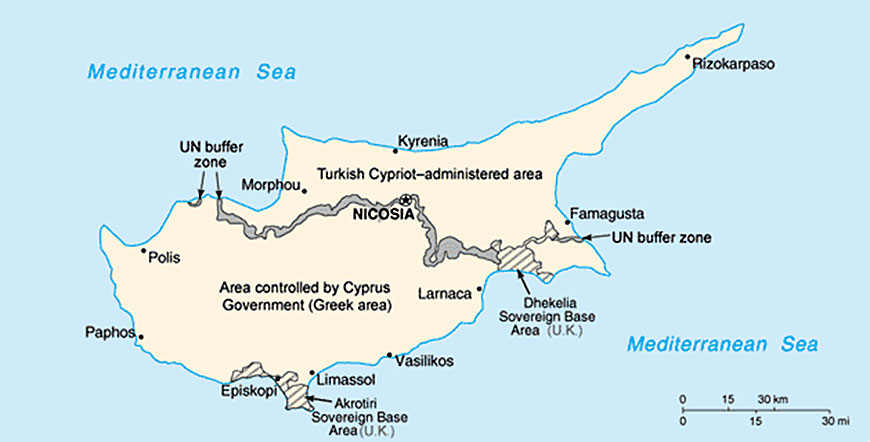
Cyprus, Post Turkish Invasion - 1974 to Present Day
As a postscript, I discovered a few surprising facts post-Op Ablaut. We were running out of roller/side guidance as it was piling up at Kingsfield Airstrip; the reason being most aircraft were converted back to full pax fit. Everything bound for Kingsfield was “double handled” at Akrotiri as the Hierarchy had stated only 70 Squadron crews were qualified to land there!
Turkish Invasion of Cyprus - 1974
YouTube video: https://www.youtube.com/v/ZuQlbFIj2-g

From: Tim Richardson, Tadworth, Surrey
Subject: Cyprus
Hello Tony,
The night before the Turks invaded Cyprus I was on shift at RAF Fairford; Brize was having its runways renovated so Air Movements had moved over to Fairford. We were on the second 12 hour shift of the four days on four days off cycle and I, like many others, was looking forward to a few days away after we finished at 0700. It was not to be! Rumours that something big was happening were rife and we were told not to leave base before 9 am, that was then extended to noon, then we were told you're back in tonight. Cheesed off would be a bit of an understatement! A Tactical Communications Wing (TCW) long wheelbase Land Rover and trailer proved an interesting task to get into a Britannia in the early hours, destination Akrotiri, but nothing else happened. We were then told that the Turks had gone in and fighting had started.
Subject: Cyprus
Hello Tony,
The night before the Turks invaded Cyprus I was on shift at RAF Fairford; Brize was having its runways renovated so Air Movements had moved over to Fairford. We were on the second 12 hour shift of the four days on four days off cycle and I, like many others, was looking forward to a few days away after we finished at 0700. It was not to be! Rumours that something big was happening were rife and we were told not to leave base before 9 am, that was then extended to noon, then we were told you're back in tonight. Cheesed off would be a bit of an understatement! A Tactical Communications Wing (TCW) long wheelbase Land Rover and trailer proved an interesting task to get into a Britannia in the early hours, destination Akrotiri, but nothing else happened. We were then told that the Turks had gone in and fighting had started.

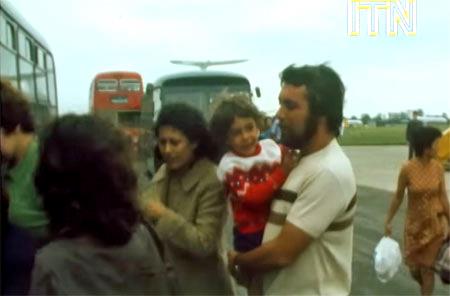
Back in that evening I was one of those tasked to create a passenger terminal out of Fairford's gym, basically put out lots of seats. Then the flights started coming in from Akrotiri, tourists, service families and refugees. With help from the WRVS and others I recall hundreds and possibly even thousands were processed through the gym, many with nothing more than they stood up in. One of my memories of that hectic fortnight was taking a double decker bus out onto the pan to collect incoming passengers! Those on cargo worked even harder, the thousand yard stare not an uncommon sight, as reinforcements and freight such as small arms ammunition went out. Nothing flew East of Cyprus, the airbridge was between the UK and the island.
Fifty years has gone by since that summer when I was 18 and still Cyprus is divided in two with no foreseeable future of the Green Line being erased from the map. Mind, the following year I was one of those sent out around the anniversary of the invasion. Rumour control had it that the Turks were intending to finish the job! Nothing happened. I like to think they heard that SAC Richardson was there and decided not to try anything! I had an interesting couple of months on attachment, I was at Thorney Island at the time, another island in the sun!
Fifty years has gone by since that summer when I was 18 and still Cyprus is divided in two with no foreseeable future of the Green Line being erased from the map. Mind, the following year I was one of those sent out around the anniversary of the invasion. Rumour control had it that the Turks were intending to finish the job! Nothing happened. I like to think they heard that SAC Richardson was there and decided not to try anything! I had an interesting couple of months on attachment, I was at Thorney Island at the time, another island in the sun!
Discovering Lager Tops, getting saved by Canadian UN Military Police from getting a beating by locals in the out of bounds area of Limassol and coming back to the UK with a serious case of bronzing to show off. Ah, misspent youth! Whatever happened to Demis Rousoss? [Demis died in 2015]
Tim
Tim
Arrivals at Fairford - note the double-decker on the pan

From: Jeff Thomas, Llandrindod Wells
Subject: Cyprus
Hi Tony,
Ah yes, the invasion. The alarm went off and we, as a duty crew, were sent to Cyprus from Lyneham direct to Kingsfield, a dirt landing strip nearby that beautiful resort of Pathos. As you quite rightly said, the Movements Teams were very busy and they had processed a lot of personnel of British background ready for recovery to the UK via Akrotiri. Anyway, our task from Kingsfield was to load as many people as possible and take them down to Akrotiri.
For the first time in my ALM career I did not count and check the number of passengers. They piled on, sitting where they could and with quite a number "strap hanging". It was almost chaotic and we were full; men, ladies and children everywhere. Anyway, I closed up and broadcast that we were about to get airborne, so please make yourselves as comfortable as possible without moving around. It was essential that they all stayed in position, they were a huge group. We travelled down to Akrotiri and were there in 20 minutes. Movements personnel came to the rescue and supervised the offload. I can see all those passengers now, grateful to be ushered into the arrivals lounge, a long stream of mainly happier people, they were safe and would be processed later for onward travel.
That event was on the 9th August 1974. We as crew were then rested in Akrotiri after which, on the 15th August 1974, we were tasked to fly back to Lyneham taking a full passenger load for UK settlement. On this trip they all had seats. Our next visit to Akrotiri was on the 14th September 1974, by then things were a lot more quiet of course, but I must add that the Movements staff were as busy as ever and we on the Hercules fleet also played our part in support, during troubled times in Cyprus.
Yours Sincerely
Jeff Thomas
(Air Movements 1961-1966 / ALM 1973-1994)
Subject: Cyprus
Hi Tony,
Ah yes, the invasion. The alarm went off and we, as a duty crew, were sent to Cyprus from Lyneham direct to Kingsfield, a dirt landing strip nearby that beautiful resort of Pathos. As you quite rightly said, the Movements Teams were very busy and they had processed a lot of personnel of British background ready for recovery to the UK via Akrotiri. Anyway, our task from Kingsfield was to load as many people as possible and take them down to Akrotiri.
For the first time in my ALM career I did not count and check the number of passengers. They piled on, sitting where they could and with quite a number "strap hanging". It was almost chaotic and we were full; men, ladies and children everywhere. Anyway, I closed up and broadcast that we were about to get airborne, so please make yourselves as comfortable as possible without moving around. It was essential that they all stayed in position, they were a huge group. We travelled down to Akrotiri and were there in 20 minutes. Movements personnel came to the rescue and supervised the offload. I can see all those passengers now, grateful to be ushered into the arrivals lounge, a long stream of mainly happier people, they were safe and would be processed later for onward travel.
That event was on the 9th August 1974. We as crew were then rested in Akrotiri after which, on the 15th August 1974, we were tasked to fly back to Lyneham taking a full passenger load for UK settlement. On this trip they all had seats. Our next visit to Akrotiri was on the 14th September 1974, by then things were a lot more quiet of course, but I must add that the Movements staff were as busy as ever and we on the Hercules fleet also played our part in support, during troubled times in Cyprus.
Yours Sincerely
Jeff Thomas
(Air Movements 1961-1966 / ALM 1973-1994)


From: Pete Orton, Camberley, Surrey
Subject: Cyprus
Tony,
50 years ago was my coming of age and transition to adult maturity, deployed to the Eastern SBA forward air strip at Kingsfield. Both NEAF MAMS teams (Blue and Red) got down to the grown-up work of supporting 70 Squadron’s epic tactical airlift from a primitive short strip close to the so called "Green Line".
Cyprus was a vital strategic, tactical, intel and diplomatic asset to both CENTO and NATO forces during the height of cold war nuclear tensions. The internal domestic complexity of the treaty of establishment and power sharing in Cyprus had been rumbling on since the 1950s. The conflict of interests between USA clandestine intel activity and UK openly declared defence obligations, have been discussed by many academic pundits over the years. Suffice to say it was a classic SNAFU for us mushrooms at the lower end of the food chain.
All of this was initially invisible to a 26-year-old SAC who had been offered a 3-year NEAF MAMS posting. The opportunity to rejoin my old work mates, Pete Cowen, Dougie Lister, Keith Parker, Neil Middleton and my ex-TAMS shift Sergeant, now chiefy, Pat South, on a plumb posting was just too good to be true. The only thing on my mind was sun, sand, kebabs and cheap booze. Allowances and exotic destinations were just the icing on the cake.
Instant friendships were made with Pete Herring and Sammy (Colin) Allen, the other 2 Blue Team’s artisan rankers. Management was provided by Eric Batty and Frankie homes , Pete Cowen had just got his 3rd stripe, nothing was going to stop this carnival in the sun!?
The Greeks had a word for it, ENOSIS - Union with Greece.
Subject: Cyprus
Tony,
50 years ago was my coming of age and transition to adult maturity, deployed to the Eastern SBA forward air strip at Kingsfield. Both NEAF MAMS teams (Blue and Red) got down to the grown-up work of supporting 70 Squadron’s epic tactical airlift from a primitive short strip close to the so called "Green Line".
Cyprus was a vital strategic, tactical, intel and diplomatic asset to both CENTO and NATO forces during the height of cold war nuclear tensions. The internal domestic complexity of the treaty of establishment and power sharing in Cyprus had been rumbling on since the 1950s. The conflict of interests between USA clandestine intel activity and UK openly declared defence obligations, have been discussed by many academic pundits over the years. Suffice to say it was a classic SNAFU for us mushrooms at the lower end of the food chain.
All of this was initially invisible to a 26-year-old SAC who had been offered a 3-year NEAF MAMS posting. The opportunity to rejoin my old work mates, Pete Cowen, Dougie Lister, Keith Parker, Neil Middleton and my ex-TAMS shift Sergeant, now chiefy, Pat South, on a plumb posting was just too good to be true. The only thing on my mind was sun, sand, kebabs and cheap booze. Allowances and exotic destinations were just the icing on the cake.
Instant friendships were made with Pete Herring and Sammy (Colin) Allen, the other 2 Blue Team’s artisan rankers. Management was provided by Eric Batty and Frankie homes , Pete Cowen had just got his 3rd stripe, nothing was going to stop this carnival in the sun!?
The Greeks had a word for it, ENOSIS - Union with Greece.

A nasty right wing EOKA thug and assassin, called Nicos Samson took control of the Cypriot government under dubious dodgy circumstances. Editor Tony has already covered the extraction of the legit president Makarios, which, allegedly, may not have best pleased our USA special relations.
This military coup was the first half of the F'-up Fairy's TTS spell. During the second half, the Turkish side called foul. Henry Kissinger reviewed the VAR and the Turks were awarded the penalty, we (the Brits), had to retreat behind the goal line, and ignore our obligations under the Treaty of Establishment. We were now as welcome as multiple farts in a sleeping bag, with Cypriot communities, both sides were pretty p!ssed off with us. I was one of the last to leave Akrotiri seconds before all servicemen were confined to camp, leaving families in Limassol to survive a bit of street shooting, as various rival militia gangs debated the ethics of their constitution.
So there we were, 12 of Trade Group 18's finest band of brothers, initially living rough in the gliding club hangar in the July heat, handling C130 and Argosy aircraft on 15 minute QTRs. Inbound loads were predominantly wheeled army stuff, outbound refugees (later to be bikini-clad tourists from the Famagusta beaches). The outbound tie-downs seemed to be a speciality of Red team's SACs Tim and Dick who gallantly demonstrated the Walter Raleigh finest traditions of British Gentlemenship. I seemed to spend a lot of time fitting centre stanchions and re rolling to pax fit, so missed out on the opportunity to display my natural charm and chivalry to the distressed young ladies in their flimsy swimwear.
This military coup was the first half of the F'-up Fairy's TTS spell. During the second half, the Turkish side called foul. Henry Kissinger reviewed the VAR and the Turks were awarded the penalty, we (the Brits), had to retreat behind the goal line, and ignore our obligations under the Treaty of Establishment. We were now as welcome as multiple farts in a sleeping bag, with Cypriot communities, both sides were pretty p!ssed off with us. I was one of the last to leave Akrotiri seconds before all servicemen were confined to camp, leaving families in Limassol to survive a bit of street shooting, as various rival militia gangs debated the ethics of their constitution.
So there we were, 12 of Trade Group 18's finest band of brothers, initially living rough in the gliding club hangar in the July heat, handling C130 and Argosy aircraft on 15 minute QTRs. Inbound loads were predominantly wheeled army stuff, outbound refugees (later to be bikini-clad tourists from the Famagusta beaches). The outbound tie-downs seemed to be a speciality of Red team's SACs Tim and Dick who gallantly demonstrated the Walter Raleigh finest traditions of British Gentlemenship. I seemed to spend a lot of time fitting centre stanchions and re rolling to pax fit, so missed out on the opportunity to display my natural charm and chivalry to the distressed young ladies in their flimsy swimwear.
Our families, having been evacuated from the street fighting in downtown Limassol, were accommodated 3-4 families per married quarter on Akrotiri and living on compo rations until they were able to be repatriated back to the UK.
There is no doubt our mates at Akrotiri had the sticky end of this operation with logic defying load frame changes from UK based C-130's to 70 Squadron NEAF based C-130's; no doubt some Rupert, Rodney or Nigel thought the newly-defined trade of Movements Controllers needed some "on the job" experience!
This task demonstrated and defined teamwork. At the risk of being accused of being an ar$e-licking creep, I must recognise the leadership qualities of Chiefy's Eric Batty and John Guy, also the guidance and mentoring of Corporal's Gordon Black and Sammy (Colin) Allan; top men all of them.
50 years on these are the formative and inspirational times I will always treasure. Thanks chaps for helping me develop my humour and values in life.
Pete.
p.s. For the majority of the emergency airlift my team mates were Ian Crouch, Eric Batty, Alan Jeffs, Geoff Cumbly and top drinking partner, Stu Whitton.
There is no doubt our mates at Akrotiri had the sticky end of this operation with logic defying load frame changes from UK based C-130's to 70 Squadron NEAF based C-130's; no doubt some Rupert, Rodney or Nigel thought the newly-defined trade of Movements Controllers needed some "on the job" experience!
This task demonstrated and defined teamwork. At the risk of being accused of being an ar$e-licking creep, I must recognise the leadership qualities of Chiefy's Eric Batty and John Guy, also the guidance and mentoring of Corporal's Gordon Black and Sammy (Colin) Allan; top men all of them.
50 years on these are the formative and inspirational times I will always treasure. Thanks chaps for helping me develop my humour and values in life.
Pete.
p.s. For the majority of the emergency airlift my team mates were Ian Crouch, Eric Batty, Alan Jeffs, Geoff Cumbly and top drinking partner, Stu Whitton.

From: Tony Gale, Gatineau, QC
Subject: Operation Ablaut
Hello all,
A few years ago, I compiled an article all about the Turkish invasion of Cyprus and subsequent evacuations of dependants and foreign nationals. Click on the image below to see it.
Subject: Operation Ablaut
Hello all,
A few years ago, I compiled an article all about the Turkish invasion of Cyprus and subsequent evacuations of dependants and foreign nationals. Click on the image below to see it.


Lift kits: Australia rolls out exoskeletons to Army, Air Force troops
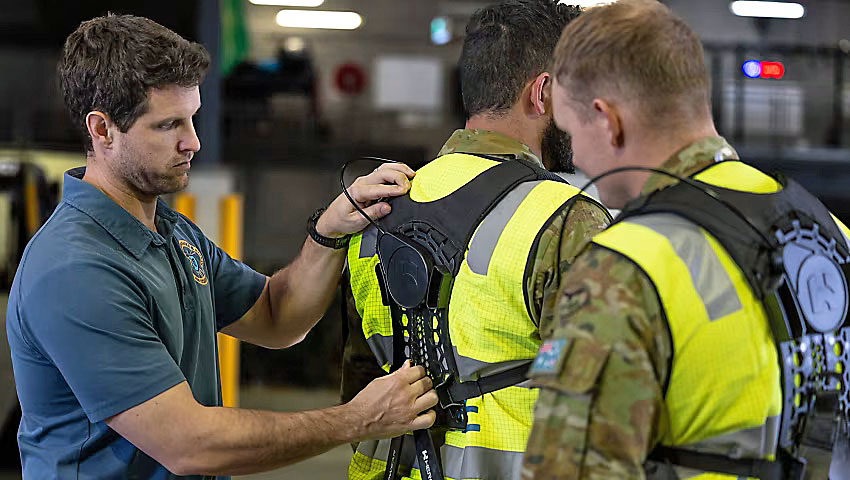
More than 80 Royal Australian Air Force and Australian Army personnel, including No 23 Squadron, responsible for air and ground movements, have undertaken training with instructors to use the new systems at RAAF Base Amberley from July 8 to 9.
Wearable technology company HeroWear previously developed the assistive clothing solution to reduce fatigue and physical strain on workers. The non-motorised or battery Apex 2 system reportedly works like an extra set of back muscles by using elastic bands to move with the user and reduce forces on the spinal muscles and discs. according to the company.
"The Royal Australian Air Force and Australian Army will be rolling out use of an exoskeleton to help reduce back injuries when lifting loads," according to Defence. "Soldiers and aviators took part in a training package for the Apex 2 exoskeleton from HeroWear, which may reduce 40 percent of the load of lifting items, resulting in less strain on the back and legs. This can help with both avoiding injury from repetitive tasks and aid people returning to work from injury. One application is cargo delivery in locations where loads have to be handled manually rather than with a forklift."
defenceconnect.com.au
Wearable technology company HeroWear previously developed the assistive clothing solution to reduce fatigue and physical strain on workers. The non-motorised or battery Apex 2 system reportedly works like an extra set of back muscles by using elastic bands to move with the user and reduce forces on the spinal muscles and discs. according to the company.
"The Royal Australian Air Force and Australian Army will be rolling out use of an exoskeleton to help reduce back injuries when lifting loads," according to Defence. "Soldiers and aviators took part in a training package for the Apex 2 exoskeleton from HeroWear, which may reduce 40 percent of the load of lifting items, resulting in less strain on the back and legs. This can help with both avoiding injury from repetitive tasks and aid people returning to work from injury. One application is cargo delivery in locations where loads have to be handled manually rather than with a forklift."
defenceconnect.com.au

From: Alec Angus, Kippax, York
Subject: Cyprus
Tony,
By 1973 I was back in stores, head hunted by 6 Squadron to be the mobile storeman. My first visit to Cyprus was with 6 for a firepower demo, along with several other NATO countries. I met up with Pete Gulliver and with his family we visited the Limassol wine festival, consequently, blotto, then my 1st meze (Turkish appetizers). Pretty good visit all-in-all. My 2nd visit was less fun, yep,'74. With 6 Squadron leading, one aircraft from 64 Squadron and one from 41 Squadron, we became the 641st F R Wing.
You're going to be there for 6 days they said, (6 weeks!), I don't know who came up with that one. As I had the stores running smoothly, I needed more to prevent me going nuts, thus I took over as i/c Motor Transport (MT) and also ground crew. Incidentally, ground crew for the only Phantom that put a burst of tracer across the bow of a Turkish Hornier, who promptly asked that we don't shoot again as he executed a 180 and headed north.
Subsequent visits were for holidays, my brother-in-law was there with the brown jobs (free accommodation). Not been back for a few years now, doubt I will.
Great work Tony, keep yourself safe brother.
Alec
Subject: Cyprus
Tony,
By 1973 I was back in stores, head hunted by 6 Squadron to be the mobile storeman. My first visit to Cyprus was with 6 for a firepower demo, along with several other NATO countries. I met up with Pete Gulliver and with his family we visited the Limassol wine festival, consequently, blotto, then my 1st meze (Turkish appetizers). Pretty good visit all-in-all. My 2nd visit was less fun, yep,'74. With 6 Squadron leading, one aircraft from 64 Squadron and one from 41 Squadron, we became the 641st F R Wing.
You're going to be there for 6 days they said, (6 weeks!), I don't know who came up with that one. As I had the stores running smoothly, I needed more to prevent me going nuts, thus I took over as i/c Motor Transport (MT) and also ground crew. Incidentally, ground crew for the only Phantom that put a burst of tracer across the bow of a Turkish Hornier, who promptly asked that we don't shoot again as he executed a 180 and headed north.
Subsequent visits were for holidays, my brother-in-law was there with the brown jobs (free accommodation). Not been back for a few years now, doubt I will.
Great work Tony, keep yourself safe brother.
Alec

From: Frank Breithaupt, Stoke on Trent, Staffs
Subject: Cyprus Emergency
Hi Tony,
In February 1974 I was posted to JSPU Cyprus where I joined fellow Corporal Ron Corrie, FS Ken Mottram, a Flt Lt, who’s name l can’t recall and a shed load of army, RCT and 10 Port Maritime Squadron. We worked from premises on Famagusta Port and Ron and I lived with our families in Famagusta’s Turkish area, close to the old city and the port.
Subject: Cyprus Emergency
Hi Tony,
In February 1974 I was posted to JSPU Cyprus where I joined fellow Corporal Ron Corrie, FS Ken Mottram, a Flt Lt, who’s name l can’t recall and a shed load of army, RCT and 10 Port Maritime Squadron. We worked from premises on Famagusta Port and Ron and I lived with our families in Famagusta’s Turkish area, close to the old city and the port.
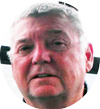
On the morning of the Turkish invasion, we were sent home to prepare our families for evacuation and to await further instructions, either in person or via BFBS radio announcements. By early afternoon, our apartments (8 apartments on 2 levels and 2 more nearby British residents' blocks) started to come under heavy gunfire at which point all 8 families took shelter in the underground car park.
During this period our block had 2 direct mortar hits, the first took out the water tanks on the roof and the second hit the side of the building causing damage to 4 of the upper apartment's kitchens.
By early evening the fighting had abated and we all moved to one of the ground floor apartments and kept the kids busy making Union Jacks with paper and crayons which we posted on all the doors and windows. We constantly listened to BFBS and were told to remain in our place of residence until advised otherwise.
During this period our block had 2 direct mortar hits, the first took out the water tanks on the roof and the second hit the side of the building causing damage to 4 of the upper apartment's kitchens.
By early evening the fighting had abated and we all moved to one of the ground floor apartments and kept the kids busy making Union Jacks with paper and crayons which we posted on all the doors and windows. We constantly listened to BFBS and were told to remain in our place of residence until advised otherwise.
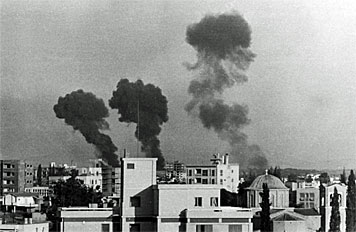
1974 - Turkish attack on Famagusta
During the night, we could hear heavy gunfire and aircraft activity in the Greek area of Famagusta and we found out later that the Turkish Air Force was protecting the Turkish area while those residents made their escape, some into the walled city via a tunnel in the shop opposite our apartment.
About mid-morning the next day, BFBS advised us to stay put as the evacuation was about to start. Shortly after we heard heavy machinery outside and a Army officer came into the building and ushered us all into waiting APCs flanked by 2 Centurion tanks, all displaying large Union Jacks and ready for action should it be required.
About mid-morning the next day, BFBS advised us to stay put as the evacuation was about to start. Shortly after we heard heavy machinery outside and a Army officer came into the building and ushered us all into waiting APCs flanked by 2 Centurion tanks, all displaying large Union Jacks and ready for action should it be required.
We were taken to a safe area on the outskirts of Famagusta via several hot spots where gunfire could still be heard and Greek soldiers were quite evident. At the assembly, we were transferred to 4 tonners. While there, we discovered a chap from the building next to ours had received shrapnel in his foot and a 12 year old boy in the block behind us had lost his life after a mortar attack. We were then transported to Ayos Nichollias where we had an army garrison. Our families were fostered out to the married quarters residents and JSPU/10 Port Sqn was relocated to Dhekelia Jetty.
We set the unit up at the jetty which had three out buildings, one of which we used as accommodation and a couple of the Greek Cypriot staff, who themselves had been displaced, managed set up a field kitchen and a shower area. The RFA Ships Sir Galahad, Lancelot and Tristen were tasked to resupply and were being prepared in the UK. In the meantime we went back to Famagusta to recover equipment and stores from the port which took several days and we were accompanied by the Gurkas whose reputation was enough to enable safe passage. The 2 RPL landing craft operated by 10 Port Sqn had already made their escape and had joined us at Dhekelia.
We set the unit up at the jetty which had three out buildings, one of which we used as accommodation and a couple of the Greek Cypriot staff, who themselves had been displaced, managed set up a field kitchen and a shower area. The RFA Ships Sir Galahad, Lancelot and Tristen were tasked to resupply and were being prepared in the UK. In the meantime we went back to Famagusta to recover equipment and stores from the port which took several days and we were accompanied by the Gurkas whose reputation was enough to enable safe passage. The 2 RPL landing craft operated by 10 Port Sqn had already made their escape and had joined us at Dhekelia.
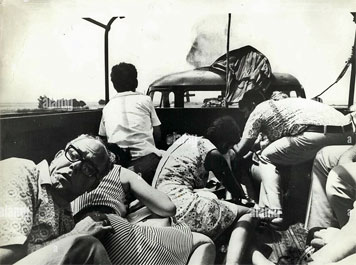
There was a pause to the war while peace negotiations were held and our families were to move back to premises in Famagusta, but obviously we could not move into our old apartment and I was allocated a bungalow out in the sticks. I was not going to subject my family to that experience again, so, although I had no option to accept the hiring, my family stayed with RCT friends close to the centre of town and the evacuation point. l also went back to my old apparent to recover our possessions, well most of them, thankfully accompanied by the Gurkhas again. We were given an hour to pack all we could into made up MFO boxes and get them down to the waiting wagon. We the took them to my new allocated hiring were we just piled them up in the living room where they stayed until after the second phase of the invasion when they could be recovered to a container at Dhekelia Jetty.
On the morning of the second phase of the invasion, I was on night watch at the jetty and as soon as my relief arrived, the Sergeant Major and I jumped into a Land Rover and went to Famagusta and got ours and other service families out to the evacuation point before the situation developed. My family were fostered out again but this time in Dhekelia so I was able to visit them frequently. Both the kids, one 3 and the other 16 months old, got chicken pox and a week later the family were evacuated to the UK and moved in with the wife’s dad in Stoke.
On the morning of the second phase of the invasion, I was on night watch at the jetty and as soon as my relief arrived, the Sergeant Major and I jumped into a Land Rover and went to Famagusta and got ours and other service families out to the evacuation point before the situation developed. My family were fostered out again but this time in Dhekelia so I was able to visit them frequently. Both the kids, one 3 and the other 16 months old, got chicken pox and a week later the family were evacuated to the UK and moved in with the wife’s dad in Stoke.
At the jetty things got really busy with the Royal Fleet Auxiliaries (RFAs) arriving one after the other. We were reinforced with army Port staff and, as dictated by the Major in charge of both units, we were working 8 on 8 off round the clock and all of us were crammed into the accommodation building on camp beds at the jetty. Heavy machinery operated continuously night and day, although there was accommodation available in the barracks directly opposite. After about 5 weeks, everyone was on their knees when 2 things happened. The first was an accident by one of JSPU permanent army corporals who fell asleep while driving and rolled a Land Rover over resulting with him going to hospital. Although he was not seriously hurt the hospital put a report in that he was seriously fatigued and totally exhausted. There was a near mutiny by the re-force staff. Both incidents were picked up by HQ Cyprus resulting in a quick directive to move us into the barracks and to change the working hours to 12 on 12 off and to rotate a 2 day break period during busy operations. In December, having completed all operations at Dhekelia, the units were relocated to Akrotiri Mole and the re enforcement returned to Gosport.
Akrotiri Mole was commanded by a Squadron Leader and operated marine craft boats. Shortly afterwards, Flt Lt Chris Seymour joined us as OIC JSPU. We still had RFA ships arriving but they were far too big to enter the small harbour. These were anchored close to the mole and operated by accompanying Port personnel using prebuilt pontoons, about 60ft x 40ft with 2 high-powered engines attached to the rear. We generally worked during daylight hours when the sea conditions allowed, although on one occasion when we had very high winds and severe swells, the Mole commandant advised our Major that conditions were getting dangerous and we should cease operations.
He initially refused until the commandant told him that the Mole was officially closed due to the dangerous conditions and if he refused to accept his instructions the matter would be referred to HQ Cyprus. He obviously didn’t want that to happen and ceased operations for the day. In February all our families rejoined us and we were allocated married quarters on the base. Ron Corrie lived across the road from us and the rest were fairly close by.
He initially refused until the commandant told him that the Mole was officially closed due to the dangerous conditions and if he refused to accept his instructions the matter would be referred to HQ Cyprus. He obviously didn’t want that to happen and ceased operations for the day. In February all our families rejoined us and we were allocated married quarters on the base. Ron Corrie lived across the road from us and the rest were fairly close by.
In April JSPU moved into brand new premises in Limassol, a very large shed with 3 offices of various sizes, while 10 Port Sqn with their 2 RPLs remained at Akrotiri Mole. Life became more sedate, handling mainly merchant shipping and assisting departing army units with container packing and all the paperwork involved. FS Frank Bullock joined us and there was an immediate clash of characters between him and the overbearing Sergeant Major; HQ Cyprus got involved again, with the result that they both needed to get on with each other. No winner, no loser. Finally, the OC 10 Port Sqn/JSPU Major**##** was honoured for "our efforts” with an MBE, needless to say, no recognition came down the line.
My very best wishes to all my fellow Movers no matter what role you fulfill.
Frank
My very best wishes to all my fellow Movers no matter what role you fulfill.
Frank

From: Neville Whitham, Cuerden, Bamber Bridge, Lancs
Subject: Cyprus Invasion July 1974
Hi Tony,
My recollections at the time of the Cyprus invasion, were whilst working on 'A' shift traffic at RAF Brize Norton. The Movements Squadron air transport operations were due to be deployed to RAF Fairford, whilst urgent repairs were carried out to the main runway at Brize.
Prior to the big move, the bulk of the air transport returning from Cyprus started spilling into Brize Norton, with essentially British tourists onboard with very little, if any, baggage. Apart from the usual Britannia and VC10 aircraft being used, what I found quite impressive were the Belfasts returning, decked out in full seat fits, stacked to the gunnells with pax. It reminded me of a cinema, when the ramp was lowered, and was probably the only time I had ever seen a Belfast in this configuration. Somebody must have 'unearthed' a stash of the old Blackburn Beverley seats from storage somewhere to facilitate this!
The transition to RAF Fairford came off reasonably smoothly during this time, once the bulk of tourists and families had returned through Brize, but was a particularly busy time on Movements, as you would imagine. I recall that we loaded nine Scorpion tanks (shoot and scoots) and three helicopters, amongst the memorable cargo. UKMAMS teams were deployed into us from Abingdon to bolster up the Movements deployment at Fairford, which greatly increased morale. When not turning aircaft around, there was a little sport and recreation to be had, especially when some of the MAMS lads constructed a volleyball net out of lashing tape. I don't remember that skill being imparted upon us within the training manuals!
Whilst it was around 50 years ago, some of those there at the time included; Gus Cobb, Jamie (SAS) Jamieson, Tom La Porte, Jack Gordon, Dinger Bell (struggling for more names now!)
Entertainment during the Fairford phase also included the regular air testing of Concorde, prior to going into service.
Finally, I tried seeking out some news stories from the internet from 1974 era to include with this input and the first one that I came across was a newsclip (film footage) that I had never seen before. I had a 'double take' when watching it, thinking, "I'm sure I know that chap at the back of the aircraft, wearing the RAF coveralls!" It turns out that it is actually me!
Video: RAF airlift from Cyprus carrying servicemen's families arrives at Brize Norton in Oxfordshire. Interviews re their evacuation from Cyprus. https://www.macearchive.org/films/atv-today-15081974-raf-airlift-cyprus
Cheers for now Tony and keep up the brilliant publication.
Nev Whitham
Subject: Cyprus Invasion July 1974
Hi Tony,
My recollections at the time of the Cyprus invasion, were whilst working on 'A' shift traffic at RAF Brize Norton. The Movements Squadron air transport operations were due to be deployed to RAF Fairford, whilst urgent repairs were carried out to the main runway at Brize.
Prior to the big move, the bulk of the air transport returning from Cyprus started spilling into Brize Norton, with essentially British tourists onboard with very little, if any, baggage. Apart from the usual Britannia and VC10 aircraft being used, what I found quite impressive were the Belfasts returning, decked out in full seat fits, stacked to the gunnells with pax. It reminded me of a cinema, when the ramp was lowered, and was probably the only time I had ever seen a Belfast in this configuration. Somebody must have 'unearthed' a stash of the old Blackburn Beverley seats from storage somewhere to facilitate this!
The transition to RAF Fairford came off reasonably smoothly during this time, once the bulk of tourists and families had returned through Brize, but was a particularly busy time on Movements, as you would imagine. I recall that we loaded nine Scorpion tanks (shoot and scoots) and three helicopters, amongst the memorable cargo. UKMAMS teams were deployed into us from Abingdon to bolster up the Movements deployment at Fairford, which greatly increased morale. When not turning aircaft around, there was a little sport and recreation to be had, especially when some of the MAMS lads constructed a volleyball net out of lashing tape. I don't remember that skill being imparted upon us within the training manuals!
Whilst it was around 50 years ago, some of those there at the time included; Gus Cobb, Jamie (SAS) Jamieson, Tom La Porte, Jack Gordon, Dinger Bell (struggling for more names now!)
Entertainment during the Fairford phase also included the regular air testing of Concorde, prior to going into service.
Finally, I tried seeking out some news stories from the internet from 1974 era to include with this input and the first one that I came across was a newsclip (film footage) that I had never seen before. I had a 'double take' when watching it, thinking, "I'm sure I know that chap at the back of the aircraft, wearing the RAF coveralls!" It turns out that it is actually me!
Video: RAF airlift from Cyprus carrying servicemen's families arrives at Brize Norton in Oxfordshire. Interviews re their evacuation from Cyprus. https://www.macearchive.org/films/atv-today-15081974-raf-airlift-cyprus
Cheers for now Tony and keep up the brilliant publication.
Nev Whitham


From: Steve Harpum, Faringdon, Oxon
Subject: Re: UKMAMS OBA OBB #073124
Hi Tony,
Thanks for a great newsletter, as ever. I loved the video of the 1967 RAF suppliers (Swindon station has changed a lot since then!), and the item about Nicosia airport.
Back in the late 80's, I was the Ops officer for the Transport Sqn in Cyprus, and as well as all the MT units, the ATLO were part of my team (as indeed were 417 Maritime Troop, who operated the Akrotiri port and the 2 landing craft, but that's another story).
As part of the ATLO duties, we were responsible for the UK UN Contingent on the Cyprus Green Line, and had to go up and organise the roulements every 4 months. It was absolutely fascinating to be able to go into the neutral zone, and the airport as shown in that video. I remember there was a DC3 that had been shot to pieces too, and that the UN had set up a go cart track on the pan. UN troops could go anywhere in that zone, but they weren't allowed to remove anything, or repair anything, so the Canadians lived in what had been a luxury hotel, the Ledra Palace, but it still had bullet and shrapnel damage all over it.
We also had responsibility for the old Port Unit, which was in Famagusta (evacuated in a hurry in 1974). Until very recently Famagusta was a closed city, but last year the Turkish authorities authorised some tourist access from the Greek Cypriot side, and I went on one of those trips - I attach a few pictures. Such a shame, for all communities on that lovely island.
There’s only a very small part that you can go into, and it’s clear that the Turks are using some of it as an R&R centre, but really interesting. The guide was very informative; her family had come from there before the invasion and it’s clear the emotions run deep. Sadly it’s now part of the game of international politics and not sure whether there is an ending in sight.
Keep up the good work,
Steve
Subject: Re: UKMAMS OBA OBB #073124
Hi Tony,
Thanks for a great newsletter, as ever. I loved the video of the 1967 RAF suppliers (Swindon station has changed a lot since then!), and the item about Nicosia airport.
Back in the late 80's, I was the Ops officer for the Transport Sqn in Cyprus, and as well as all the MT units, the ATLO were part of my team (as indeed were 417 Maritime Troop, who operated the Akrotiri port and the 2 landing craft, but that's another story).
As part of the ATLO duties, we were responsible for the UK UN Contingent on the Cyprus Green Line, and had to go up and organise the roulements every 4 months. It was absolutely fascinating to be able to go into the neutral zone, and the airport as shown in that video. I remember there was a DC3 that had been shot to pieces too, and that the UN had set up a go cart track on the pan. UN troops could go anywhere in that zone, but they weren't allowed to remove anything, or repair anything, so the Canadians lived in what had been a luxury hotel, the Ledra Palace, but it still had bullet and shrapnel damage all over it.
We also had responsibility for the old Port Unit, which was in Famagusta (evacuated in a hurry in 1974). Until very recently Famagusta was a closed city, but last year the Turkish authorities authorised some tourist access from the Greek Cypriot side, and I went on one of those trips - I attach a few pictures. Such a shame, for all communities on that lovely island.
There’s only a very small part that you can go into, and it’s clear that the Turks are using some of it as an R&R centre, but really interesting. The guide was very informative; her family had come from there before the invasion and it’s clear the emotions run deep. Sadly it’s now part of the game of international politics and not sure whether there is an ending in sight.
Keep up the good work,
Steve
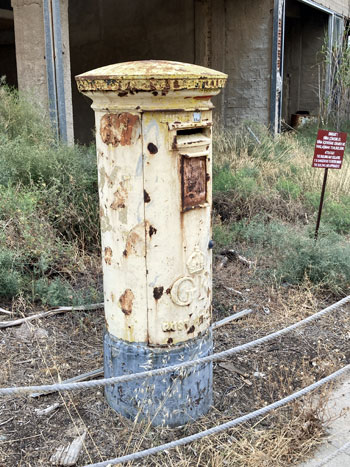
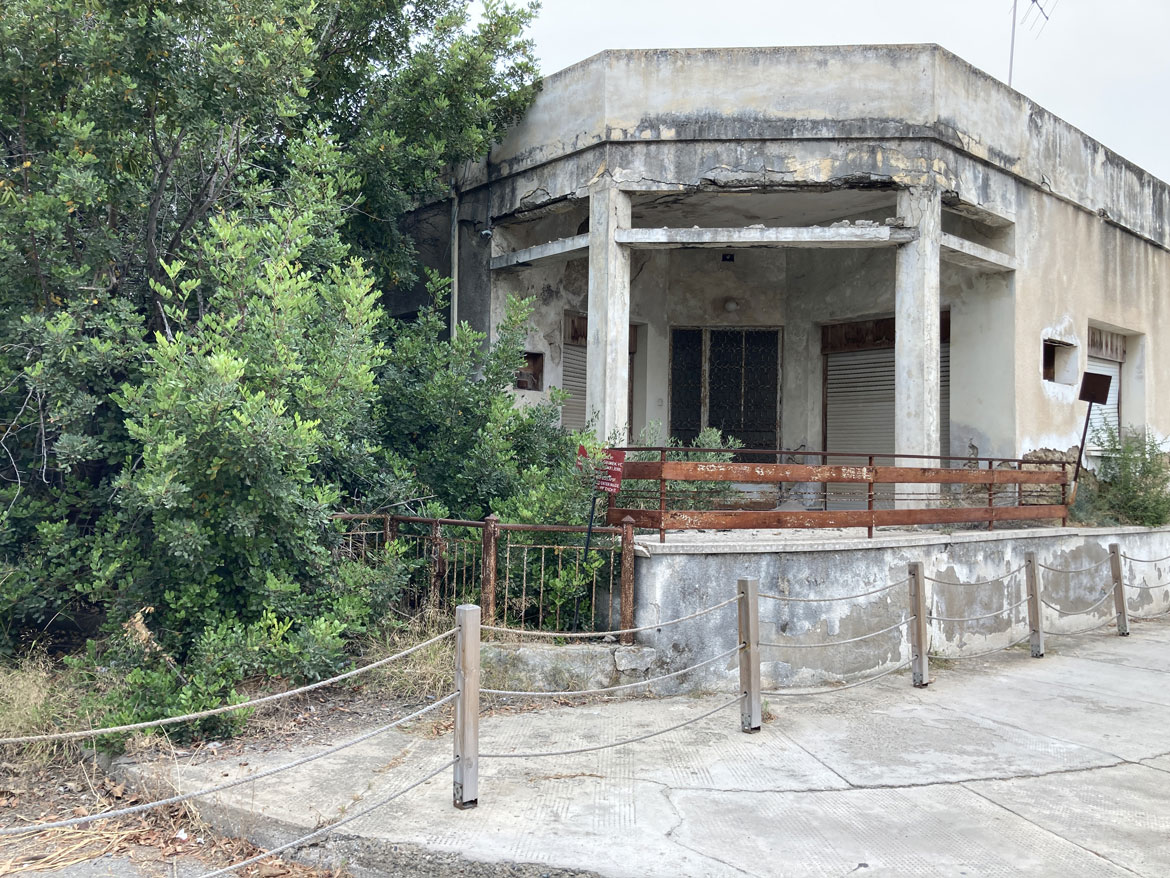


From: Dave Green, Huntingdon, Cambs
Subject: Cyprus
Hi Tony,
My limited experience of Cyprus as a Mover was the detachment to the island on the Movements Course in 1980. We did a squadron back-to-back exchange with, if I recall correctly, 23 Squadron Phantoms deploying to Cyprus and 5 Squadron Lightnings returning to the UK. This was an excellent experience and also a good and bad time at Akrotiri. I managed to screw up an evaluated trim exercise, but luckily Sgt John Boyd covered for me which I will always be grateful for, an excellent SNCO and superb instructor.
I think it was on about the second day of the detachment, we were working late (well into the afternoon in Cyprus lol), and the Station got a Pan call for an aircraft flying into Larnaca that couldn't get its undercarriage down. A CL-44 freighter arrived about an hour later and landed on a foam carpet with the gear up. Nobody was hurt and the aircraft departed the runway onto the bondu thereby keeping the airfield operational after a short clean up operation. The crew were extremely grateful and bought drinks all night for all in the Officers' Mess.
Subject: Cyprus
Hi Tony,
My limited experience of Cyprus as a Mover was the detachment to the island on the Movements Course in 1980. We did a squadron back-to-back exchange with, if I recall correctly, 23 Squadron Phantoms deploying to Cyprus and 5 Squadron Lightnings returning to the UK. This was an excellent experience and also a good and bad time at Akrotiri. I managed to screw up an evaluated trim exercise, but luckily Sgt John Boyd covered for me which I will always be grateful for, an excellent SNCO and superb instructor.
I think it was on about the second day of the detachment, we were working late (well into the afternoon in Cyprus lol), and the Station got a Pan call for an aircraft flying into Larnaca that couldn't get its undercarriage down. A CL-44 freighter arrived about an hour later and landed on a foam carpet with the gear up. Nobody was hurt and the aircraft departed the runway onto the bondu thereby keeping the airfield operational after a short clean up operation. The crew were extremely grateful and bought drinks all night for all in the Officers' Mess.

We obviously had a little downtime, hiring a SSAFA minibus to tour around part of the island. The course members were Paul Mansfield, Richard Partridge, Carol Pierce, Steve Hudson, Jerry Allen, Joy Milne and myself.
We also got a little time on the beach and Paul Mansfield coerced us into doing some water skiing as he was an expert! Paul insisted on starting his run off the jetty rather than from in the water. Jerry Allen with an extremely expensive brand new Canon AE-1 camera sat in the tow boat with the driver to relay hand signals. Jerry put the camera in the bottom of the boat. Unfortunately when our resident expert told Jerry to 'hit it', the tow rope was caught around the jetty so when the driver fully opened the throttle, the boat moved forward about 6 feet then dug itself under water while Paul remained on the Jetty. The sum outcome of the exercise was an embarrassed Paul Mansfield and a brand new Canon camera written off after a dunk in salt water. Jerry claimed on his kit insurance and his camera was replaced.
On the last day of the detachment, we loaded our Herc to go home; the aircraft doors closed and engines started before we heard a major explosion. Looking out of the Herc windows we saw a huge plume of smoke and flame off the runway adjacent to where the CL44 came to rest. Unfortunately, a Canberra had lost an engine on take-off, rolled over and crashed killing both crew.
We also got a little time on the beach and Paul Mansfield coerced us into doing some water skiing as he was an expert! Paul insisted on starting his run off the jetty rather than from in the water. Jerry Allen with an extremely expensive brand new Canon AE-1 camera sat in the tow boat with the driver to relay hand signals. Jerry put the camera in the bottom of the boat. Unfortunately when our resident expert told Jerry to 'hit it', the tow rope was caught around the jetty so when the driver fully opened the throttle, the boat moved forward about 6 feet then dug itself under water while Paul remained on the Jetty. The sum outcome of the exercise was an embarrassed Paul Mansfield and a brand new Canon camera written off after a dunk in salt water. Jerry claimed on his kit insurance and his camera was replaced.
On the last day of the detachment, we loaded our Herc to go home; the aircraft doors closed and engines started before we heard a major explosion. Looking out of the Herc windows we saw a huge plume of smoke and flame off the runway adjacent to where the CL44 came to rest. Unfortunately, a Canberra had lost an engine on take-off, rolled over and crashed killing both crew.
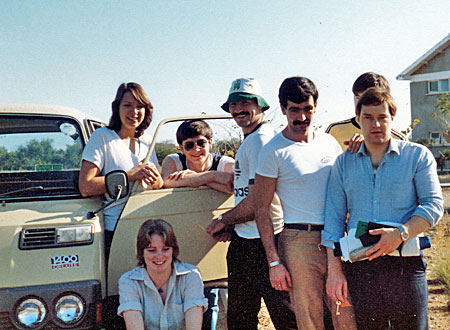
This was an extremely eventful week with parts of it best forgotten, however it was a stark reminder that air operations particularly with older generation aircraft came with much higher risks than modern aircraft operations today.
Rgds
Dave Green
Rgds
Dave Green
Fun in the sun on Cyprus

George Fouhey, Bedford, Beds
Subject: Cyprus
Hi,
1969 - I had just got married and put on PWR's. Then in September '69 I got my posting to RAF Akrotiri. We arrived and were put up overnight in the Panorama Hotel, Heroes Square, Limassol. What an awakening to the seedier side of life! The noises were something to behold. We managed to get a letting [private accommodation rental] the next day and hire furniture and moved in. It was really basic and that night I went in on night shift, leaving my wife of 18 years home alone.
Life was good and as time went on we moved to a brand new hiring; myself and a Flt Lt went up into the Troodos Hills to get the wife of the owner to sign it over to the RAF.
We had some great times - best 3 years ever. We went back in 2006 on holiday and wow, had it changed! The bypass was now a motorway and we managed to locate our 1st house but we couldn't find the second one. Got many happy memories.
Regards,
George
Subject: Cyprus
Hi,
1969 - I had just got married and put on PWR's. Then in September '69 I got my posting to RAF Akrotiri. We arrived and were put up overnight in the Panorama Hotel, Heroes Square, Limassol. What an awakening to the seedier side of life! The noises were something to behold. We managed to get a letting [private accommodation rental] the next day and hire furniture and moved in. It was really basic and that night I went in on night shift, leaving my wife of 18 years home alone.
Life was good and as time went on we moved to a brand new hiring; myself and a Flt Lt went up into the Troodos Hills to get the wife of the owner to sign it over to the RAF.
We had some great times - best 3 years ever. We went back in 2006 on holiday and wow, had it changed! The bypass was now a motorway and we managed to locate our 1st house but we couldn't find the second one. Got many happy memories.
Regards,
George

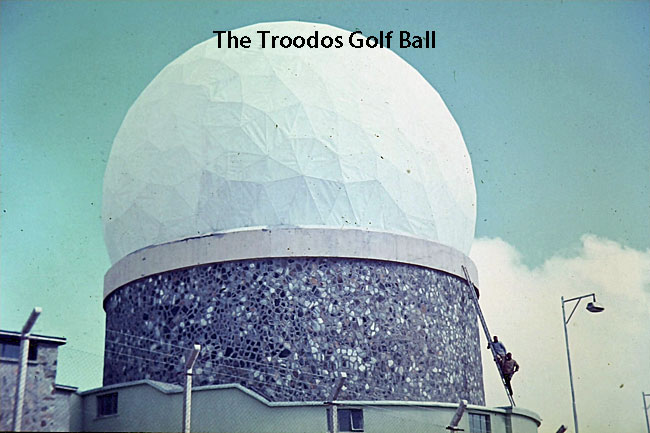

From: Gerry Davis, Bedminster, Glos
Subject: Cyprus
Hi Tony,
June 1965 - On arrival at Akrotiri I found myself in a bit of a dilemma, I was posted onto NEAF MAMS, I arrived at the Air Movements Section to be told by the SAMO that it hadn’t been formed yet and I was to report on shift to the Air Movements Section. Shortly after a Flt/Lt arrived and I was introduced to him as the new OC MAMS (he was to become the first of 4 OCMAMS during my time out there). A Twynham hut at the rear of the Air Movements Section was allocated as our new HQ. From then onwards the other staff arrived at various times, all on posting from the UK after completing the Air Movements course. I was the only one who had previous Air Movements experience and held a driving licence, and who had actually been near an aircraft. When fully formed we started off by taking over some of the Air Movements tasks and turning around some of their aircraft, much to the delight of the shifts which encouraged us with their cat callings. It was hard going at first, being supervised by SNCO’s who had no knowledge of the intricacies of the job.
Then we were to receive our first fully fledged task, which was nothing to do with aircraft. By this time, we had in our possession a Massy Ferguson tractor forklift and a Land Rover, both of which I was the only one who could drive. This task was offloading a ship outside the 3-mile limit full of missiles. This was quite a large ship with deep holds, full of these stacked boxed missiles. So, the first task was to lower the tractor/forklift into the hold to help load the missiles onto netting for loading onto Army pontoon boats for ferrying to the respective bomb dumps on the Sovereign Base camp. This task took four days to complete. It was interesting talking to the ship’s crew, who although got an additional danger allowance for the ship’s cargo, moaned like hell because there was no overtime on the boat. They used to sound the ships horn for when the tea break was ready. This one day I decided to let all the others go for their tea and I would load up some of the nets ready for raising. When they got back off, I went for a bit of sustenance, to be greeted by the ships cook who told me to beat it as tea break was over!
My wife did 3 years in Cyprus, I was always off to somewhere or other with MAMS. During these 3 years We were posted initially to Akrotiri, then overnight to Nicosia, for a year, then back to Akrotiri, and I also did an attachment to Episkopi. The wife, bless her, having to spend so much time on her own, as I was away a lot, got herself a Nursing job in the PMRAF Hospital Akrotiri. If you're interested I have written a book of my experiences, which includes our time in Cyprus.
Gerry
Subject: Cyprus
Hi Tony,
June 1965 - On arrival at Akrotiri I found myself in a bit of a dilemma, I was posted onto NEAF MAMS, I arrived at the Air Movements Section to be told by the SAMO that it hadn’t been formed yet and I was to report on shift to the Air Movements Section. Shortly after a Flt/Lt arrived and I was introduced to him as the new OC MAMS (he was to become the first of 4 OCMAMS during my time out there). A Twynham hut at the rear of the Air Movements Section was allocated as our new HQ. From then onwards the other staff arrived at various times, all on posting from the UK after completing the Air Movements course. I was the only one who had previous Air Movements experience and held a driving licence, and who had actually been near an aircraft. When fully formed we started off by taking over some of the Air Movements tasks and turning around some of their aircraft, much to the delight of the shifts which encouraged us with their cat callings. It was hard going at first, being supervised by SNCO’s who had no knowledge of the intricacies of the job.
Then we were to receive our first fully fledged task, which was nothing to do with aircraft. By this time, we had in our possession a Massy Ferguson tractor forklift and a Land Rover, both of which I was the only one who could drive. This task was offloading a ship outside the 3-mile limit full of missiles. This was quite a large ship with deep holds, full of these stacked boxed missiles. So, the first task was to lower the tractor/forklift into the hold to help load the missiles onto netting for loading onto Army pontoon boats for ferrying to the respective bomb dumps on the Sovereign Base camp. This task took four days to complete. It was interesting talking to the ship’s crew, who although got an additional danger allowance for the ship’s cargo, moaned like hell because there was no overtime on the boat. They used to sound the ships horn for when the tea break was ready. This one day I decided to let all the others go for their tea and I would load up some of the nets ready for raising. When they got back off, I went for a bit of sustenance, to be greeted by the ships cook who told me to beat it as tea break was over!
My wife did 3 years in Cyprus, I was always off to somewhere or other with MAMS. During these 3 years We were posted initially to Akrotiri, then overnight to Nicosia, for a year, then back to Akrotiri, and I also did an attachment to Episkopi. The wife, bless her, having to spend so much time on her own, as I was away a lot, got herself a Nursing job in the PMRAF Hospital Akrotiri. If you're interested I have written a book of my experiences, which includes our time in Cyprus.
Gerry


From: Gordon Gray, Powick, Worcs
Subject: Cyprus
After 50 years Gray’s ‘grey matter’ is somewhat fogged relating to some circumstances in the evacuation from Cyprus as a result of Turkey’s ‘Intervention‘ that 20th July. I had been a Sergeant running a Passenger Section shift at Brize at the time but that period was also during a spell as the Squadron ‘schoolmaster’ to get 47 LAC Movements Operators ready for their promotion exam. It was not long after having taken over the role from Taff Sugg.
When the evacuation of foreign nationals began just after Turkey’s advance north of the Island, several Movers I knew were detached to Akrotiri and Nicosia, but I was sent to receive those unfortunate people deplaning from aircraft at RAF Fairford. They were generally dressed in just what they were wearing when advised to report for evacuation from Cyprus; they then were on moved to ‘wherever’ with some civilian airlines arriving to collect their nationals and take them home.
But fast forward 4 years to September of ’78 and posted to Akrotiri to work in JSPU Cyprus. I was fortunate during my 3 years in accompanying OC 10 Port Squadron, Col. Betts, to inspect the Famagusta Port facilities and see equipment left behind that belonged to our Contractor then operating in Limassol, also noting other abandoned property and vehicles. During our final months of the posting we were permitted one journey to drive through the Ledra Palace checkpoint to tour only specific areas in the Turkish occupied north part of the Island.
In those permitted ‘excursions’ into the Turkish area of the north prompted our holidays there during the late 90’s which later on culminated in having a villa built in Yesiltepe; lived there for 7 years then sold up and returned to UK for family reasons.
Unfortunately, Kofi Annan’s plan of 2004 to unify the Island was rejected by the Greeks but supported by the Turks. Brussels granted entry to EU for the whole Island. As many of us are aware, Greece always wanted ‘Enosis’ for Cyprus but the ‘Intervention’ by Turkey after the Greek Coup and that which followed, scuppered their plan.
Many of the friends we made living there had scant or no knowledge of that period in the Island’s history; sad that it is, the divide remains, but we enjoyed both parts and their communities. Many friends made still reside there after moving to TRNC years ago.
After such a long and violent history Turkey as a Guarantor Power put things right, I think, but then I guess I am biased!
Look forward to other recollections and views on this month’s topic Tony, thank you too!
Gordon
Subject: Cyprus
After 50 years Gray’s ‘grey matter’ is somewhat fogged relating to some circumstances in the evacuation from Cyprus as a result of Turkey’s ‘Intervention‘ that 20th July. I had been a Sergeant running a Passenger Section shift at Brize at the time but that period was also during a spell as the Squadron ‘schoolmaster’ to get 47 LAC Movements Operators ready for their promotion exam. It was not long after having taken over the role from Taff Sugg.
When the evacuation of foreign nationals began just after Turkey’s advance north of the Island, several Movers I knew were detached to Akrotiri and Nicosia, but I was sent to receive those unfortunate people deplaning from aircraft at RAF Fairford. They were generally dressed in just what they were wearing when advised to report for evacuation from Cyprus; they then were on moved to ‘wherever’ with some civilian airlines arriving to collect their nationals and take them home.
But fast forward 4 years to September of ’78 and posted to Akrotiri to work in JSPU Cyprus. I was fortunate during my 3 years in accompanying OC 10 Port Squadron, Col. Betts, to inspect the Famagusta Port facilities and see equipment left behind that belonged to our Contractor then operating in Limassol, also noting other abandoned property and vehicles. During our final months of the posting we were permitted one journey to drive through the Ledra Palace checkpoint to tour only specific areas in the Turkish occupied north part of the Island.
In those permitted ‘excursions’ into the Turkish area of the north prompted our holidays there during the late 90’s which later on culminated in having a villa built in Yesiltepe; lived there for 7 years then sold up and returned to UK for family reasons.
Unfortunately, Kofi Annan’s plan of 2004 to unify the Island was rejected by the Greeks but supported by the Turks. Brussels granted entry to EU for the whole Island. As many of us are aware, Greece always wanted ‘Enosis’ for Cyprus but the ‘Intervention’ by Turkey after the Greek Coup and that which followed, scuppered their plan.
Many of the friends we made living there had scant or no knowledge of that period in the Island’s history; sad that it is, the divide remains, but we enjoyed both parts and their communities. Many friends made still reside there after moving to TRNC years ago.
After such a long and violent history Turkey as a Guarantor Power put things right, I think, but then I guess I am biased!
Look forward to other recollections and views on this month’s topic Tony, thank you too!
Gordon

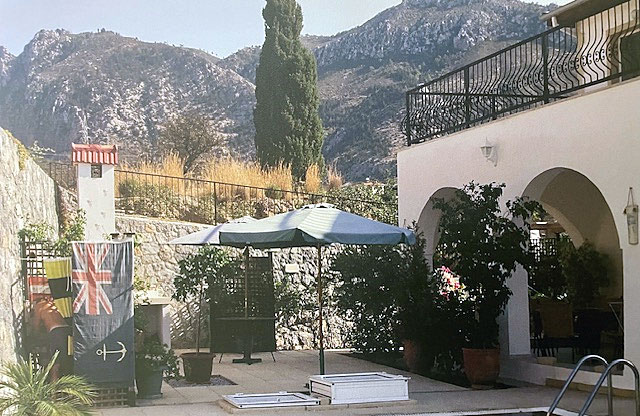
Our home in Yesiltepe, North Cyprus. Build from ground started 2004 with regular trips to monitor progress and finished over 18 months. Reminiscing seeing it in the cover of the Besparmak range looking to the south east.

From: Tony Street, Fort Erie, ON
Subject: Cyprus
Good evening, Tony,
During the Cyprus problems between the Turks and the Greeks in the 1960’s, the United Nations sent in a contingent of troops as “Peace Keepers”. The Canadian presence, at times, varied from 500 to 1100. One of our missions at 437 Squadron was to support them by regular flights to and from Cyprus and Canada.
We had a weekly flight carrying 33 army lads going from Trenton to Cyprus with a stop in Marville, France. In Marville we refueled, re-stocked the pantry and changed crews, about an hour, tops. The troops remained on board. From Marville to Nicosia was approximately 4-5 hours depending on weather. So, upon arrival, the soldiers had been onboard the a/c for at least 13 hours. Same on the way home. To maintain the balance of NATO troops we brought in 33 bods and had to take 33 home.
I remember the time that the army movements officer said, “Here’s the manifest for the 33 guys,” then whispered “Here’s a manifest for one extra person we must get off the island.” He explained that the troops were told clearly not to fraternize with the local women because of the huge difference in culture. The extra bod we took home made the unfortunate choice of ignoring this custom and took a local lass out on a couple of innocent dates, when he picked her up for date three, he was surprised to walk into his engagement party.
Later, the movements guy told us that the family of the "left-at-the-altar" girl came banging on the gate and cursing in two or more languages. They were told that the miscreant had come down with smallpox, or some such malady, and had to be airlifted home. They were further advised that they should consult their family doctor, “Just to be on the safe side.” I heard nothing further on this matter.
Subject: Cyprus
Good evening, Tony,
During the Cyprus problems between the Turks and the Greeks in the 1960’s, the United Nations sent in a contingent of troops as “Peace Keepers”. The Canadian presence, at times, varied from 500 to 1100. One of our missions at 437 Squadron was to support them by regular flights to and from Cyprus and Canada.
We had a weekly flight carrying 33 army lads going from Trenton to Cyprus with a stop in Marville, France. In Marville we refueled, re-stocked the pantry and changed crews, about an hour, tops. The troops remained on board. From Marville to Nicosia was approximately 4-5 hours depending on weather. So, upon arrival, the soldiers had been onboard the a/c for at least 13 hours. Same on the way home. To maintain the balance of NATO troops we brought in 33 bods and had to take 33 home.
I remember the time that the army movements officer said, “Here’s the manifest for the 33 guys,” then whispered “Here’s a manifest for one extra person we must get off the island.” He explained that the troops were told clearly not to fraternize with the local women because of the huge difference in culture. The extra bod we took home made the unfortunate choice of ignoring this custom and took a local lass out on a couple of innocent dates, when he picked her up for date three, he was surprised to walk into his engagement party.
Later, the movements guy told us that the family of the "left-at-the-altar" girl came banging on the gate and cursing in two or more languages. They were told that the miscreant had come down with smallpox, or some such malady, and had to be airlifted home. They were further advised that they should consult their family doctor, “Just to be on the safe side.” I heard nothing further on this matter.

A couple of times I had to stay in Nicosia overnight because of a broken airplane or a problem getting the troop to the airport. It is a lovely place, no wonder a few of the troops volunteered to do 2 or 3 stints there. One of the benefits of visiting there is one could purchase a tun of red wine in a huge and wicker woven jug for about seven dollars.
One would take it unopened to the club in Marville where the guys drank their fill or until bedtime. (This event was dependent upon a couple of things, drinking experience, a strong stomach and the ability to handle a hangover headache of monster proportion).
The next day, getting ready for the ride home, the remaining wine, if any, was poured out and the bottle was brought home and turned into an interior decorator’s dream, a lovely lamp.
There are many such lamps in Trenton.
Tony
One would take it unopened to the club in Marville where the guys drank their fill or until bedtime. (This event was dependent upon a couple of things, drinking experience, a strong stomach and the ability to handle a hangover headache of monster proportion).
The next day, getting ready for the ride home, the remaining wine, if any, was poured out and the bottle was brought home and turned into an interior decorator’s dream, a lovely lamp.
There are many such lamps in Trenton.
Tony
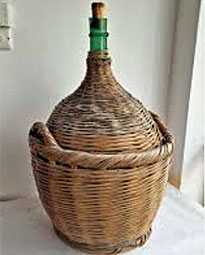

From: Mick Craner, Yeovil, Somerset
Subject: Cyprus
Hello Tony,
In September 1966, I was fortunate to be stationed as a Air Quartermaster (AQM) with 48 Squadron at Changi. A crew was required to proceed to the UK to collect a refurbished Hastings. I was again fortunate to be a member of that crew. Our boss to collect the Hastings was Sqn Ldr Amos and our Co-Pilot was my boss on 48, Flt Lt Paul Jenner. We flew with British Eagle to the UK on a Britannia. Sqn Ldr Amos arranged for a small aircraft (I think it was a Pembroke) to take us to RAF Shawbury to collect the Hastings WD499 that was being looked after by three elderly gents, who were very reluctant to let it go. On 29th September 1966 we flew to Lyneham. We had a small well deserved break and flew to Akrotiri on 4th October 1966. That evening we went to a wine festival (only to help with the local wine consumption!).
Sqn Ldr Amos asked Paul for his Cat Card to sign up for the flight to Singapore. I said I haven’t got my Cat card only my Driving Licence. “That will do, said the S/L and wrote, "Pissed in Cyprus" signed and dated "Amos, Sqn Ldr" .
Next day Muharraq (Bahrain) then Gan (Maldive Islands) with night stops at each, and finally Changi where WD499 became a member of 48 Squadron.
Take Care Mate.
Mick Craner.
Subject: Cyprus
Hello Tony,
In September 1966, I was fortunate to be stationed as a Air Quartermaster (AQM) with 48 Squadron at Changi. A crew was required to proceed to the UK to collect a refurbished Hastings. I was again fortunate to be a member of that crew. Our boss to collect the Hastings was Sqn Ldr Amos and our Co-Pilot was my boss on 48, Flt Lt Paul Jenner. We flew with British Eagle to the UK on a Britannia. Sqn Ldr Amos arranged for a small aircraft (I think it was a Pembroke) to take us to RAF Shawbury to collect the Hastings WD499 that was being looked after by three elderly gents, who were very reluctant to let it go. On 29th September 1966 we flew to Lyneham. We had a small well deserved break and flew to Akrotiri on 4th October 1966. That evening we went to a wine festival (only to help with the local wine consumption!).
Sqn Ldr Amos asked Paul for his Cat Card to sign up for the flight to Singapore. I said I haven’t got my Cat card only my Driving Licence. “That will do, said the S/L and wrote, "Pissed in Cyprus" signed and dated "Amos, Sqn Ldr" .
Next day Muharraq (Bahrain) then Gan (Maldive Islands) with night stops at each, and finally Changi where WD499 became a member of 48 Squadron.
Take Care Mate.
Mick Craner.
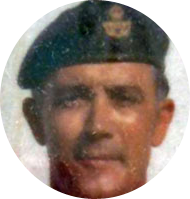
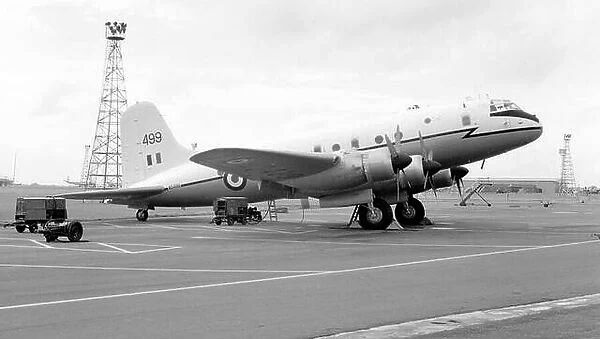
Handley-Page Hastings WD499 at Changi

From: Mike/Gerry Lefebvre, Oromocto, NB
Subject: Memories of Cyprus
Hi Tony,
I joined the RCAF in 1965, and upon completion of my basic course, I was posted to CFB Trenton in Ontario, Canada. Working on line crew, we loaded SF 307 to Akrotiri every Sunday on a Yukon AC from 437 Sqn, which was equivalent to the British Britannia. The front belly was filled with cases of ration boxes loaded on plywood over the rollers, wall to wall, floor to ceiling. The top load was pax up front and freight behind.
A few years later, I became employed as a Loadmaster on the C130 Hercules. In July 1974, between the 22nd to the 30th, I flew in and out of Akrotiri 3 times in support of the UN and periodically in the following few years. I flew into Akrotiri, between October 10th to 15th, 1977, three times from our base in Lahr, Germany; one time staying for the night. We went across a checkpoint and over to a building similar to a hotel but for Canadians. It was a place frequented by British citizens. When supper time came, we (flight engineers and loadies) went to a restaurant within walking distance and joined the front end crew in a booth next to them. They were having Kabobs, so we ordered the same. It consisted of a multitude of dishes; one after the other, and a pitcher of bottomless wine on the table. We were at least an hour after the high paid front crew’s arrival and they started to handover the dishes they did not want. There was so many parts of animals we had never heard of. We ate it all.
Time passes but hatred and war manage to surface. So eventually they use force and start bombing each other. I was overseas for a couple of days on a regular flight when we were informed that we were on one hour standby to go evacuate people from Akrotiri and that the centre of the runway had been blown up and no runway was available.
In the seventies there were no cellphones, but our Aircraft Commander had a humongous phone that he carried with him everywhere we went. That was for meals mostly, the rest of the time we had to be pretty much within reaching distance, not much time to waste when the call came. This lasted for a week and then the next move came. We were to go to Cairo, Egypt to be closer to the destination. Off we went and checked in at the hotel next to the Pyramids for a crew rest.
The next day action time came pretty fast. We had a rendezvous with 2 Canadian fighter jets that came from our bases in Germany. We flew in with them hanging onto us until we made our approach to an evacuation grass landing area lit by torches. We made a 180 and down went the ramp and the evacuees ran in as quickly as possible. No bags with them and no seats on the aircraft to sit on. They jammed in and when they reached the ramp hinge, I started to raise the ramp and we were gone. We flew to Lahr, 6.3 hours away and never were told how many we evacuated. Another day, another dollar and satisfaction for a job accomplished!
Always hope for peace. God bless our troops.
Mike
Subject: Memories of Cyprus
Hi Tony,
I joined the RCAF in 1965, and upon completion of my basic course, I was posted to CFB Trenton in Ontario, Canada. Working on line crew, we loaded SF 307 to Akrotiri every Sunday on a Yukon AC from 437 Sqn, which was equivalent to the British Britannia. The front belly was filled with cases of ration boxes loaded on plywood over the rollers, wall to wall, floor to ceiling. The top load was pax up front and freight behind.
A few years later, I became employed as a Loadmaster on the C130 Hercules. In July 1974, between the 22nd to the 30th, I flew in and out of Akrotiri 3 times in support of the UN and periodically in the following few years. I flew into Akrotiri, between October 10th to 15th, 1977, three times from our base in Lahr, Germany; one time staying for the night. We went across a checkpoint and over to a building similar to a hotel but for Canadians. It was a place frequented by British citizens. When supper time came, we (flight engineers and loadies) went to a restaurant within walking distance and joined the front end crew in a booth next to them. They were having Kabobs, so we ordered the same. It consisted of a multitude of dishes; one after the other, and a pitcher of bottomless wine on the table. We were at least an hour after the high paid front crew’s arrival and they started to handover the dishes they did not want. There was so many parts of animals we had never heard of. We ate it all.
Time passes but hatred and war manage to surface. So eventually they use force and start bombing each other. I was overseas for a couple of days on a regular flight when we were informed that we were on one hour standby to go evacuate people from Akrotiri and that the centre of the runway had been blown up and no runway was available.
In the seventies there were no cellphones, but our Aircraft Commander had a humongous phone that he carried with him everywhere we went. That was for meals mostly, the rest of the time we had to be pretty much within reaching distance, not much time to waste when the call came. This lasted for a week and then the next move came. We were to go to Cairo, Egypt to be closer to the destination. Off we went and checked in at the hotel next to the Pyramids for a crew rest.
The next day action time came pretty fast. We had a rendezvous with 2 Canadian fighter jets that came from our bases in Germany. We flew in with them hanging onto us until we made our approach to an evacuation grass landing area lit by torches. We made a 180 and down went the ramp and the evacuees ran in as quickly as possible. No bags with them and no seats on the aircraft to sit on. They jammed in and when they reached the ramp hinge, I started to raise the ramp and we were gone. We flew to Lahr, 6.3 hours away and never were told how many we evacuated. Another day, another dollar and satisfaction for a job accomplished!
Always hope for peace. God bless our troops.
Mike


From: Colin Eyre, Bridgend, Glamorgan
Subject: Cyprus
Hi Tony,
In 1974, I was loitering in Wildenrath, Germany, but of course we heard the stories of the evacuation which must have been exciting! 10 years earlier however, in September 1964, I arrived in Akrotiri on my first overseas posting. It was an accompanied tour although my wife could not join me until the following January. In 1963 trouble had arisen and the UN had been called in as a peace keeping force. When I arrived there were still curfews in place and road blocks. I well remember on the road from Akrotiri to Limassol there would be a check point manned by Greek Cypriot soldiers and then a little further down the road there would be another one manned by the UN. The only worrying thing there was the age of the Greek soldiers who appeared to be very young and they would be waving around what appeared to be .303 rifles (scary!).
During our three years there we only had a couple of minor incidents. We managed to see quite a bit of the island and particularly liked Kyrenia, a place that my brother has been visiting every year for quite a few years now. My DAMO's were Mike Slade and Sid Stones plus we had Paul Steiner as a deputy. Great times!
Subject: Cyprus
Hi Tony,
In 1974, I was loitering in Wildenrath, Germany, but of course we heard the stories of the evacuation which must have been exciting! 10 years earlier however, in September 1964, I arrived in Akrotiri on my first overseas posting. It was an accompanied tour although my wife could not join me until the following January. In 1963 trouble had arisen and the UN had been called in as a peace keeping force. When I arrived there were still curfews in place and road blocks. I well remember on the road from Akrotiri to Limassol there would be a check point manned by Greek Cypriot soldiers and then a little further down the road there would be another one manned by the UN. The only worrying thing there was the age of the Greek soldiers who appeared to be very young and they would be waving around what appeared to be .303 rifles (scary!).
During our three years there we only had a couple of minor incidents. We managed to see quite a bit of the island and particularly liked Kyrenia, a place that my brother has been visiting every year for quite a few years now. My DAMO's were Mike Slade and Sid Stones plus we had Paul Steiner as a deputy. Great times!


From: Stephen Davey, Tadcaster, North Yorks
Subject: Cyprus
Tony,
I know of one former Mover who wasn't involved; me! By the time the Turks invaded Cyprus I was safely ensconced at Brüggen after previously going back into the Supply world the previous November, however I did revisit the island in July 1980 with No 5 (F) Sqdn APC (Armament practice camp) as a member of the Supply team, funnily enough as an ex mover guess who got volunteered to raise the F1380's Air Waybill This was whilst I was stationed at Binbrook on my final tour, happy days indeed.
Many regards, Steve Davey
Subject: Cyprus
Tony,
I know of one former Mover who wasn't involved; me! By the time the Turks invaded Cyprus I was safely ensconced at Brüggen after previously going back into the Supply world the previous November, however I did revisit the island in July 1980 with No 5 (F) Sqdn APC (Armament practice camp) as a member of the Supply team, funnily enough as an ex mover guess who got volunteered to raise the F1380's Air Waybill This was whilst I was stationed at Binbrook on my final tour, happy days indeed.
Many regards, Steve Davey


60 Second Update, with the UK Mobile Air Movements Squadron (UKMAMS)

From: David Powell, Princes Risborough, Bucks
Subject: Cyprus Memories
Hello Tony,
Although never given an Akrotiri task while on MAMS (UK or Gulf), I do have one particular Cyprus adventure which brings a memory smile. Time: early spring 1972. I had just joined the Logs Plans team (then called Admin Plans) at HQ 38 Group at RAF Odiham when along came a Command Post Exercise (CPX) of joint and headquarters procedures for a major mixed force deployment to the Far East. This was Exercise Silent Trumpet (aka Exercise Bunged Up Bugle).
No actual front-line forces were involved, just appropriate headquarters teams and comms (courtesy of Tac Comms Wing) were deployed. Because Defence Funds were tight, we could only afford to go as far as Cyprus. Consequently, our deployed Far East Joint Force HQ, was actually at the Army base at Dhekelia. I vaguely recall some forward exercise players along with some TCW being deployed to the strip at Kingsfield.
From my humble point of view it was a good exercise. Lots of realistic injects to be sorted, and you quickly tuned in to the exercise setting. Furthermore, to help make the exercise realistic for all the agencies involved, including those back in the UK, we were exercising at Far East time. So, at the end of a busy shift in Malaysia and in appropriate tropical uniform, after a hand over to the night team, you would step outside to discover it was only lunch time and we were actually in Cyprus!
It also meant that when taking advantage of social opportunities during those wonderful warm Cyprus evenings, there wasn’t much time for sleep before we were back on shift! I seem to recall missing quite a lot of sleep on that Exercise.
Best wishes
David Powell F Team UKMAMS, RAF Abingdon
Subject: Cyprus Memories
Hello Tony,
Although never given an Akrotiri task while on MAMS (UK or Gulf), I do have one particular Cyprus adventure which brings a memory smile. Time: early spring 1972. I had just joined the Logs Plans team (then called Admin Plans) at HQ 38 Group at RAF Odiham when along came a Command Post Exercise (CPX) of joint and headquarters procedures for a major mixed force deployment to the Far East. This was Exercise Silent Trumpet (aka Exercise Bunged Up Bugle).
No actual front-line forces were involved, just appropriate headquarters teams and comms (courtesy of Tac Comms Wing) were deployed. Because Defence Funds were tight, we could only afford to go as far as Cyprus. Consequently, our deployed Far East Joint Force HQ, was actually at the Army base at Dhekelia. I vaguely recall some forward exercise players along with some TCW being deployed to the strip at Kingsfield.
From my humble point of view it was a good exercise. Lots of realistic injects to be sorted, and you quickly tuned in to the exercise setting. Furthermore, to help make the exercise realistic for all the agencies involved, including those back in the UK, we were exercising at Far East time. So, at the end of a busy shift in Malaysia and in appropriate tropical uniform, after a hand over to the night team, you would step outside to discover it was only lunch time and we were actually in Cyprus!
It also meant that when taking advantage of social opportunities during those wonderful warm Cyprus evenings, there wasn’t much time for sleep before we were back on shift! I seem to recall missing quite a lot of sleep on that Exercise.
Best wishes
David Powell F Team UKMAMS, RAF Abingdon
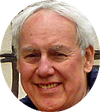

From: Bryan Morgan, Abingdon, Oxon
Subject: Cyprus
Tony,
On my posting to RAF Changi in 1964, my wife, 2 year old daughter and I endured a 32 hour charter flight courtesy of British Eagle, flag stopping at Istanbul and Bombay. Being of the trade and with friends in the FEAF Booking Centre, our return journey was on an RAF Comet IV flagging at Gan and Akrotiri. Little did I know I would be enjoying a 10-month tour on Gan some years later.
My fond memory of our return from Changi was that we had Harry Secombe and Anita Harris on board returning from entertainment duties in Borneo.
At Gan we were treated to Harry meeting his look-a-like, aka a chief technician, who both entertained us for the duration of the turn around. At Akrotiri, I thought now or never, and introduced myself to him having birthplaces in South Wales only eight miles apart i.e., Swansea for Harry and Port Talbot for myself. What a gentleman he turned out to be and I still savour, with very fond memories, the time we spent chatting.
Regards, Bryan
Subject: Cyprus
Tony,
On my posting to RAF Changi in 1964, my wife, 2 year old daughter and I endured a 32 hour charter flight courtesy of British Eagle, flag stopping at Istanbul and Bombay. Being of the trade and with friends in the FEAF Booking Centre, our return journey was on an RAF Comet IV flagging at Gan and Akrotiri. Little did I know I would be enjoying a 10-month tour on Gan some years later.
My fond memory of our return from Changi was that we had Harry Secombe and Anita Harris on board returning from entertainment duties in Borneo.
At Gan we were treated to Harry meeting his look-a-like, aka a chief technician, who both entertained us for the duration of the turn around. At Akrotiri, I thought now or never, and introduced myself to him having birthplaces in South Wales only eight miles apart i.e., Swansea for Harry and Port Talbot for myself. What a gentleman he turned out to be and I still savour, with very fond memories, the time we spent chatting.
Regards, Bryan
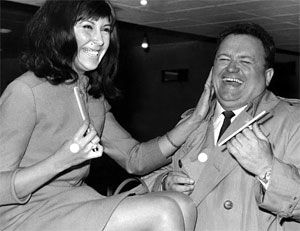
Anita Harris and Harry Secombe
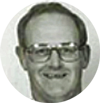

From: Steve Cross, Doncaster
Subject: Cyprus
Hi Tony,
I trust all is well within your world. Thanks for the continuation of supporting me in jogging my very little grey cells with memories of my previous life as a Mover.
I’ve never been posted to Akrotiri, although I have spent time on the island on detachment and in transit. My first few visits were with 12 Squadron, Lossiemouth, as their MSF Mover. My job was to look after the Fly-Away Packs (FAP) as part of the BritForLeb detachment during 1983 and plan the recovery. The nightly screening of the days' Buccaneer Ops was always interesting, as they flew down streets as low as the buildings. My initiation to Kokinelli by my room mates are indelibly imprinted forever, along with the nightly tradition of hurling up onto the room ceiling fan the last flip-flop kabab; it’s contents of chilli sauce, having survived the stagger across the bondu, splattering everyone and everything in its path.
Subject: Cyprus
Hi Tony,
I trust all is well within your world. Thanks for the continuation of supporting me in jogging my very little grey cells with memories of my previous life as a Mover.
I’ve never been posted to Akrotiri, although I have spent time on the island on detachment and in transit. My first few visits were with 12 Squadron, Lossiemouth, as their MSF Mover. My job was to look after the Fly-Away Packs (FAP) as part of the BritForLeb detachment during 1983 and plan the recovery. The nightly screening of the days' Buccaneer Ops was always interesting, as they flew down streets as low as the buildings. My initiation to Kokinelli by my room mates are indelibly imprinted forever, along with the nightly tradition of hurling up onto the room ceiling fan the last flip-flop kabab; it’s contents of chilli sauce, having survived the stagger across the bondu, splattering everyone and everything in its path.

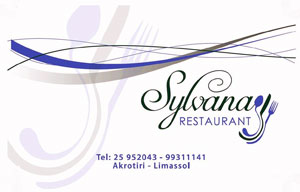
MAMS transits and u/s over-nighters were particularly a blur, as the expected team visit to Sylvana Restaurant for the obligatory mezze, always ended up being messy. This was always followed by copious brandy sour night caps, and the very civilised exchange of empty bottles for refilled ones each morning were a definite hit.
My last detachment to Cyprus was as the Mover, July-Sept 1990, for 5 and 29 Squadrons. This was supposed to be my swan song, but Saddam thought differently and decided mid-way through it to invade Kuwait. My jolly, sorry, I mean job, was to plan and prep chalks for the recovery back home, but that all changed to deploying the Squadrons to their FOB. For everyone involved in the Squadrons it was a busy and exciting time.
My last detachment to Cyprus was as the Mover, July-Sept 1990, for 5 and 29 Squadrons. This was supposed to be my swan song, but Saddam thought differently and decided mid-way through it to invade Kuwait. My jolly, sorry, I mean job, was to plan and prep chalks for the recovery back home, but that all changed to deploying the Squadrons to their FOB. For everyone involved in the Squadrons it was a busy and exciting time.
As Akrotiri became busier, my accommodation was taken up by inbound and transient personnel, so I ended up finding my sleeping arrangements relocated in the SWO's office, at his insistence, until my return to Coningsby. Each night I wasn’t sure if I needed to be on parade with those on jankers! It was good of the SWO to let me invade his office, as long as I kept it clean. Sadly, I’ve not been back since... yet!
Best wishes to all, Steve
Best wishes to all, Steve

From: John Leek, Caerphilly
Subject: Cyprus
Hi Tony,
After 4 years at Northolt, I was posted to Akrotiri in 1968 - the posting document clearly said Air Movs. (During the stay at Northolt, I applied to remain a Clerk Air Movs but was detached to Khormaksar when the paperwork came through and I missed out. Off to Hereford for Supply courses but still worked on Movements.)
On arrival at Akrotiri, whilst deplaning, I met a couple of mates who both said to get onto A shift - good start!
When I was waiting on a bus outside the pax lounge to go to Limassol and find a house, a Flt Sgt came on board and called out my surname - he introduced himself and gave me a quick brief on the next two days' activities. I asked him what shift I was likely to work on - and then my world fell apart... “Shift? Shift? There aren’t any shifts in SCAF!"
After 2 mind-bogglingly boring years, I got my substantive tapes and moved back to Movements - on A shift!
Subject: Cyprus
Hi Tony,
After 4 years at Northolt, I was posted to Akrotiri in 1968 - the posting document clearly said Air Movs. (During the stay at Northolt, I applied to remain a Clerk Air Movs but was detached to Khormaksar when the paperwork came through and I missed out. Off to Hereford for Supply courses but still worked on Movements.)
On arrival at Akrotiri, whilst deplaning, I met a couple of mates who both said to get onto A shift - good start!
When I was waiting on a bus outside the pax lounge to go to Limassol and find a house, a Flt Sgt came on board and called out my surname - he introduced himself and gave me a quick brief on the next two days' activities. I asked him what shift I was likely to work on - and then my world fell apart... “Shift? Shift? There aren’t any shifts in SCAF!"
After 2 mind-bogglingly boring years, I got my substantive tapes and moved back to Movements - on A shift!


Coningsby Movers Mentor Papuan Military on Exercise Pitch Black
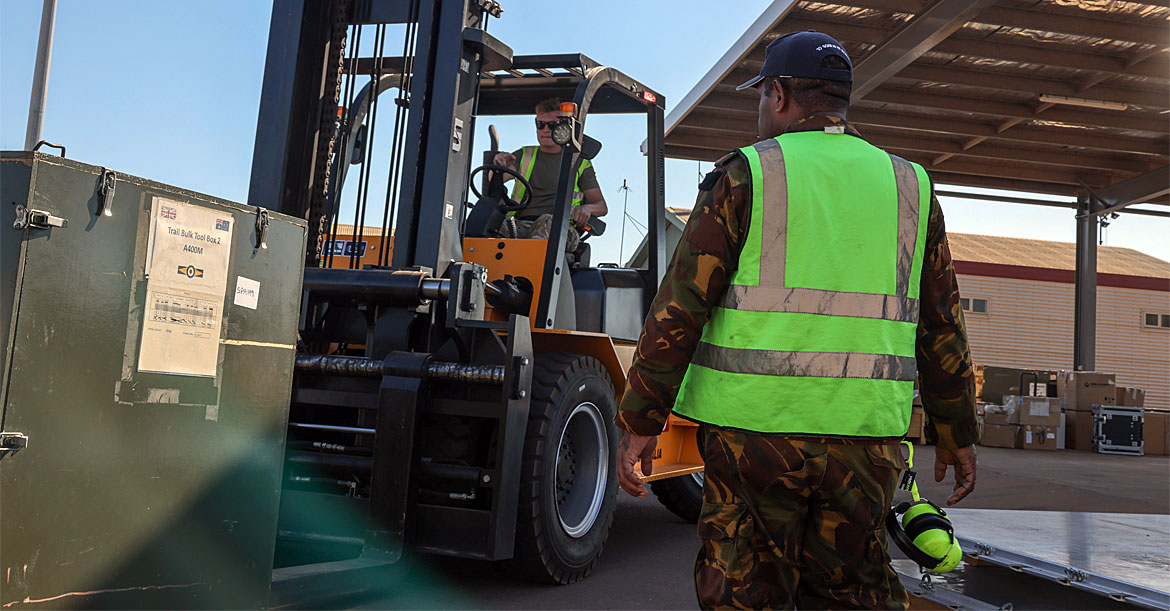
Co-operation between nations was top of the list on Exercise PITCH BLACK as Logistics Movers from RAF Coningsby mentored military personnel from Papua New Guinea. During Pitch Black the Royal Air Force projected air power more than 9000 miles from home. Six Typhoons from XI (F) Squadron were accompanied by a Voyager tanker from RAF Brize Norton and scores of supporting personnel from across the Service.
Corporal Adam Cairns is an RAF Logistics Mover based at RAF Coningsby. RAF Movers are responsible for planning and executing the movement of RAF personnel and equipment by road, rail, air and sea. Exercise Pitch Black is about training, and Logistics is a new branch in the Papuan armed forces. Adam and the detachment of movers from Coningsby were asked by the Royal Australian Air Force to show the Papuans how military equipment is safely returned home. Adam said: “The RAAF asked us if we could help mentor them to show our processes and what we do to get the kit from Australia back to the UK. As a new branch in their military the Papuans were keen to see how other nations work.”
On Pitch Black the Coningsby team’s job was to ensure the equipment had arrived ready for the exercise to start, loading aircraft and liaising with customs compliance teams to make sure the military equipment had the necessary clearances. Squadron Leader Philip Bishop is officer commanding Logistics Squadron at RAF Coningsby. Adam added: “The planning for Pitch Black doesn’t just happen overnight. RAF Coningsby’s Movers carry out meticulous planning months in advance to ensure that both the equipment and personnel arrive at precisely the right time for the exercise."
Adam joined the RAF in 2016; he has travelled around the world and been deployed to the Middle East, Asia, North America and Europe. He continued: “Pitch Black has been good but challenging, having very little time to turn around all the kit from the end of the exercise to getting it ready for loading on Voyager, A400M, and C17. But everyone we have worked with has been helpful.”
Wing Commander Nick Startup is Acting Station Commander at RAF Coningsby. She said: “Military effect depends on logistics, and it speaks volumes about the quality of Coningsby’s movers that they were chosen to mentor the Papuan personnel on Pitch Black. It’s important that when you learn, you learn from the best, and that has certainly been the case here.”
raf.mod.uk
Corporal Adam Cairns is an RAF Logistics Mover based at RAF Coningsby. RAF Movers are responsible for planning and executing the movement of RAF personnel and equipment by road, rail, air and sea. Exercise Pitch Black is about training, and Logistics is a new branch in the Papuan armed forces. Adam and the detachment of movers from Coningsby were asked by the Royal Australian Air Force to show the Papuans how military equipment is safely returned home. Adam said: “The RAAF asked us if we could help mentor them to show our processes and what we do to get the kit from Australia back to the UK. As a new branch in their military the Papuans were keen to see how other nations work.”
On Pitch Black the Coningsby team’s job was to ensure the equipment had arrived ready for the exercise to start, loading aircraft and liaising with customs compliance teams to make sure the military equipment had the necessary clearances. Squadron Leader Philip Bishop is officer commanding Logistics Squadron at RAF Coningsby. Adam added: “The planning for Pitch Black doesn’t just happen overnight. RAF Coningsby’s Movers carry out meticulous planning months in advance to ensure that both the equipment and personnel arrive at precisely the right time for the exercise."
Adam joined the RAF in 2016; he has travelled around the world and been deployed to the Middle East, Asia, North America and Europe. He continued: “Pitch Black has been good but challenging, having very little time to turn around all the kit from the end of the exercise to getting it ready for loading on Voyager, A400M, and C17. But everyone we have worked with has been helpful.”
Wing Commander Nick Startup is Acting Station Commander at RAF Coningsby. She said: “Military effect depends on logistics, and it speaks volumes about the quality of Coningsby’s movers that they were chosen to mentor the Papuan personnel on Pitch Black. It’s important that when you learn, you learn from the best, and that has certainly been the case here.”
raf.mod.uk

From: Gordon Gray, Powick, Worcs
Subject: ‘RIAT24’
Hi Tony,
There have been some interesting subjects recently on the OBA web from you and grateful thanks for your commitment to it; it's valued link to those who remember, as well as keeping the ‘embers’ alight for others following, surely this must give you pride in your hard work and dedication to it?
Have you viewed this year’s ‘Official Souvenir Programme‘ for the RIAT event, I wonder?
I did not attend but a neighbour passed it on to me and when I read the left page advertisement opposite the welcome item from the RAF Chief of the Air Staff, I did have a cynical thought... did the editors fix it to be opposite the first non-pilot ACM to head up the RAF? Then of course I realised that today’s air support in our national defence is all about science, engineering and space technology; he is obviously a brilliant technocrat! Joined the Service three years after my leaving.
Anyway, just a thought, keep safe, fit and well.
Fond regards,
Gordon
Subject: ‘RIAT24’
Hi Tony,
There have been some interesting subjects recently on the OBA web from you and grateful thanks for your commitment to it; it's valued link to those who remember, as well as keeping the ‘embers’ alight for others following, surely this must give you pride in your hard work and dedication to it?
Have you viewed this year’s ‘Official Souvenir Programme‘ for the RIAT event, I wonder?
I did not attend but a neighbour passed it on to me and when I read the left page advertisement opposite the welcome item from the RAF Chief of the Air Staff, I did have a cynical thought... did the editors fix it to be opposite the first non-pilot ACM to head up the RAF? Then of course I realised that today’s air support in our national defence is all about science, engineering and space technology; he is obviously a brilliant technocrat! Joined the Service three years after my leaving.
Anyway, just a thought, keep safe, fit and well.
Fond regards,
Gordon

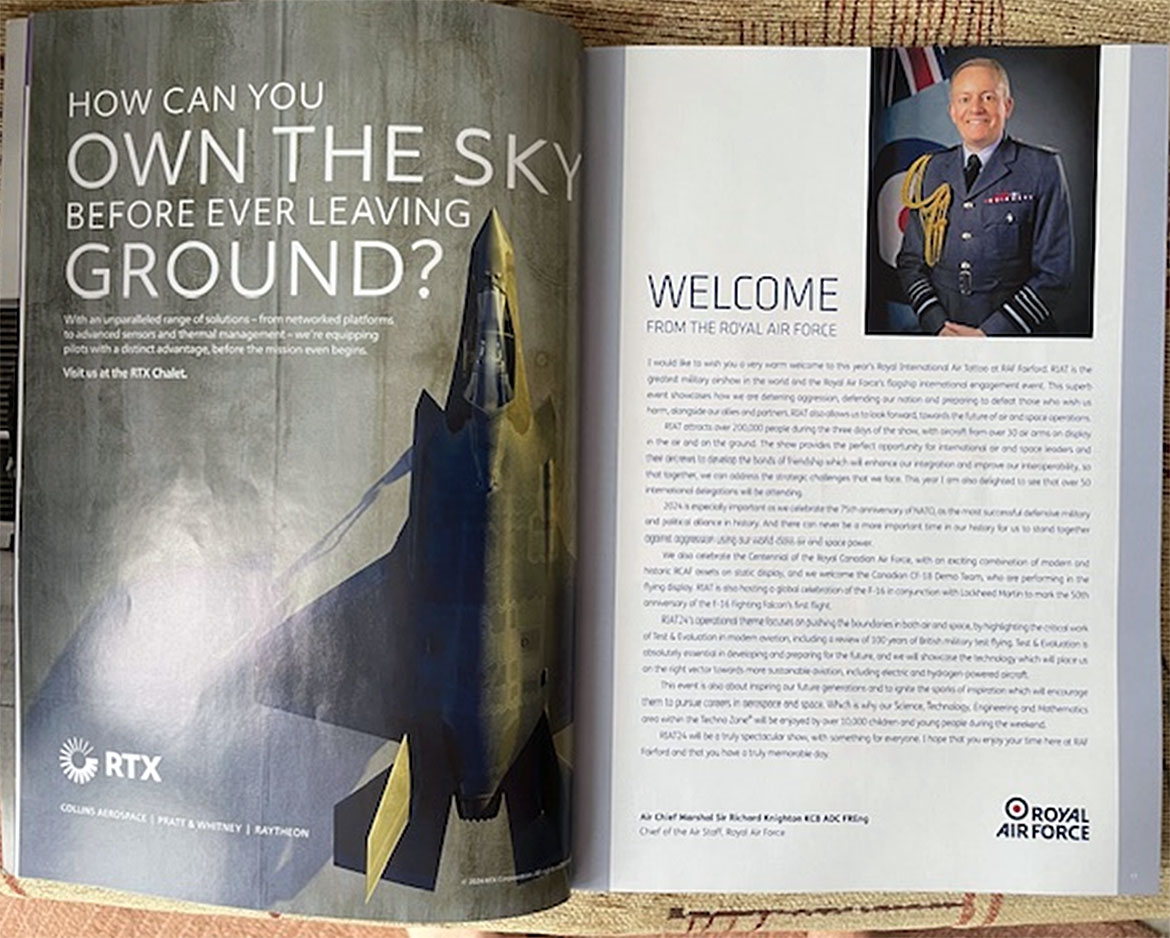

From: Clive Kinnear-Nock
Subject: Whereabouts - Michael Tremaine
Hello Tony,
I am seeking guidance on how to locate an ex-41st RAF Boy Entrant (telegraphist) colleague who has not been in touch since 2019. His name is Michael (Mike/Mick) Tremaine and he was born in Colchester (UK) in 1945, and moved to Goose Bay in about early 2000. Searches of obituaries from 2019 to 2024 have returned no reports.
I am now involved with assisting in maintaining current status listing of the 41st Entry RAFBE (telegraphist), which sadly will then be used to update RAFBE Last Post listings for those who have ‘passed’.
If possible, any guidance as to how and where I should focus my search would be gratefully received.
Thank you.
Clive Kinnear-Nock
cfkn@hotmail.com
Subject: Whereabouts - Michael Tremaine
Hello Tony,
I am seeking guidance on how to locate an ex-41st RAF Boy Entrant (telegraphist) colleague who has not been in touch since 2019. His name is Michael (Mike/Mick) Tremaine and he was born in Colchester (UK) in 1945, and moved to Goose Bay in about early 2000. Searches of obituaries from 2019 to 2024 have returned no reports.
I am now involved with assisting in maintaining current status listing of the 41st Entry RAFBE (telegraphist), which sadly will then be used to update RAFBE Last Post listings for those who have ‘passed’.
If possible, any guidance as to how and where I should focus my search would be gratefully received.
Thank you.
Clive Kinnear-Nock
cfkn@hotmail.com
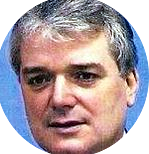
This Newsletter is Dedicated
to the Memories of:
Barry Lund (RAAF)
Basil Hughes (RAF)
Brian Powling (RAF)
Dave Jodoin (RCAF)
Pat, wife of Roger Blow (RAF)
Wg Cdr Arthur Rowland (RAF)
Wg Cdr Pete King (RAF and RNZAF)
Heather, wife of Duggan Suggitt (RCAF)
to the Memories of:
Barry Lund (RAAF)
Basil Hughes (RAF)
Brian Powling (RAF)
Dave Jodoin (RCAF)
Pat, wife of Roger Blow (RAF)
Wg Cdr Arthur Rowland (RAF)
Wg Cdr Pete King (RAF and RNZAF)
Heather, wife of Duggan Suggitt (RCAF)
Tony Gale
ukmamsoba@gmail.com
ukmamsoba@gmail.com
